Wildfire risk to rise this







City crews work to pave a small
Mark NIELSEN Citizen staff
mnielsen@pgcitizen.ca
Are you ready if you had to leave your home at a moment’s notice?
That was one of the topics raised Tuesday when an open house was held to give the public an update on the steps local government is taking to keep wildfires at bay and to develop a plan for evacuating Prince George should the need arise.
While almost every one of the 100 or so people who attended a midday presentation at the Civic Centre raised a hand when asked if wildfires are a concern for them, only a quarter of them at best replied with a yes when asked if they had an evacuation kit ready should they need to evacuate. Emergency programs manager Adam Davey provided some advice on that matter. He said it is a matter of assembling enough food, water, clothing “and anything else you made need” to last 72 hours or three full days.
Put those items in a tote tray or a large hockey bag and and “put it in a place where, if you had to leave at a moment’s notice, you could collect it and go.”
In addition, he suggested households assemble a “grab and go” bag – namely a daypack carrying important documents such as passports, birth certificates and insurance policies.
In a guide for household preparedness, PrepareBC also


suggests the kit include an AM/ FM radio, medication, a blanket, pen and notepad, cellphone charger, personal toiletries, small first aid kit, an extra pair of glasses or contacts, cash in small bills, a local map, whistle and out-of-area contact card.
Storing copies of important documents, including family photos, on a USB stick is smart, as is keeping the gas tank of the family vehicle half full.
Davey also provided an update
on the progress made on developing an emergency evacuation plan for the city, saying a final version will be released in June after a table top exercise is carried out this Friday at Kin 1 with the help of a 900-square-foot map of the city. As it stands, he said about 80 per cent of the city’s population would simply drive away. For those less mobile, any of 18 elementary schools around the city would be the assembly points for those who
can walk while emergency personnel would rely on knocking on doors to round up the rest. From there, they would be taken by bus to CN Centre, the main assembly point.
As to the chance of a wildfire forcing an evacuation, Josh Kelly, the city’s supervisor of energy, environment and sustainability, said it stands at moderate and “maybe a little bit lower than most people think.”
— see PROPERTY, page 3
Frank PEEBLES Citizen staff fpeebles@pgcitizen.ca
History is making history. Huble Homestead, the living museum on the site of the pioneer farm on the shores of the Fraser River north of the city, is about to open its gates for the new season. This will be the 30th year those doors will swing wide for the public.
“We aren’t shifting things up too much for the anniversary, but there is a comprehensive exhibit set up in the barn to show everyone how far we’ve come,” said Krystal Leason, executive director of the Huble Homestead/Giscome Portage Heritage Society.
“Things that seem like they happened just yesterday were actually 10 or 12 years ago, as it turns out. That’s what happens when you’re around this long.” The actual homestead has been around since the turn of the 20th century.
— see ‘IT’S THE, page 3



PG Recycling and Return-It Centre owner Austin Kim, right, presents The Exploration Place CEO Tracy Calogheros with a $3,500 cheque on Wednesday at the museum. The money was raised in three months through the recycling company’s charity donation bins that are spread out around the city.
Citizen staff
Construction in the city remains ahead of last year’s record-setting pace, according to the latest report to city council on building permits.
As of the end of April, the year-to-date total stood at $44.4 million – $4.6 million more than by the same point last year.
The pace is expected to continue.
“We anticipate this trend going forward for the rest of the year,” planning and development general manager Ian Wells told city council on Monday night.
“There are a lot of projects in the works that we’ll be seeing building permits coming forward for shortly.”
At $26.1 million over 47 permits, con-
struction of single-family homes has been leading the way. Multiple-family is the second largest category at $9.1 million over 16 permits.
Council members welcomed the news. Coun Garth Frizzell said the work will expand the city’s tax base.
“It brings more properties on and shares the burden of the tax levy across more people, so this is all good news,” he said. With the work, comes employment over both the short and the long term, Mayor Lyn Hall said. “That means jobs in our community, it means that we are able to retain young workers and those that want to stay here after they graduate,” he said. “This is an important number and it means a lot to us.”



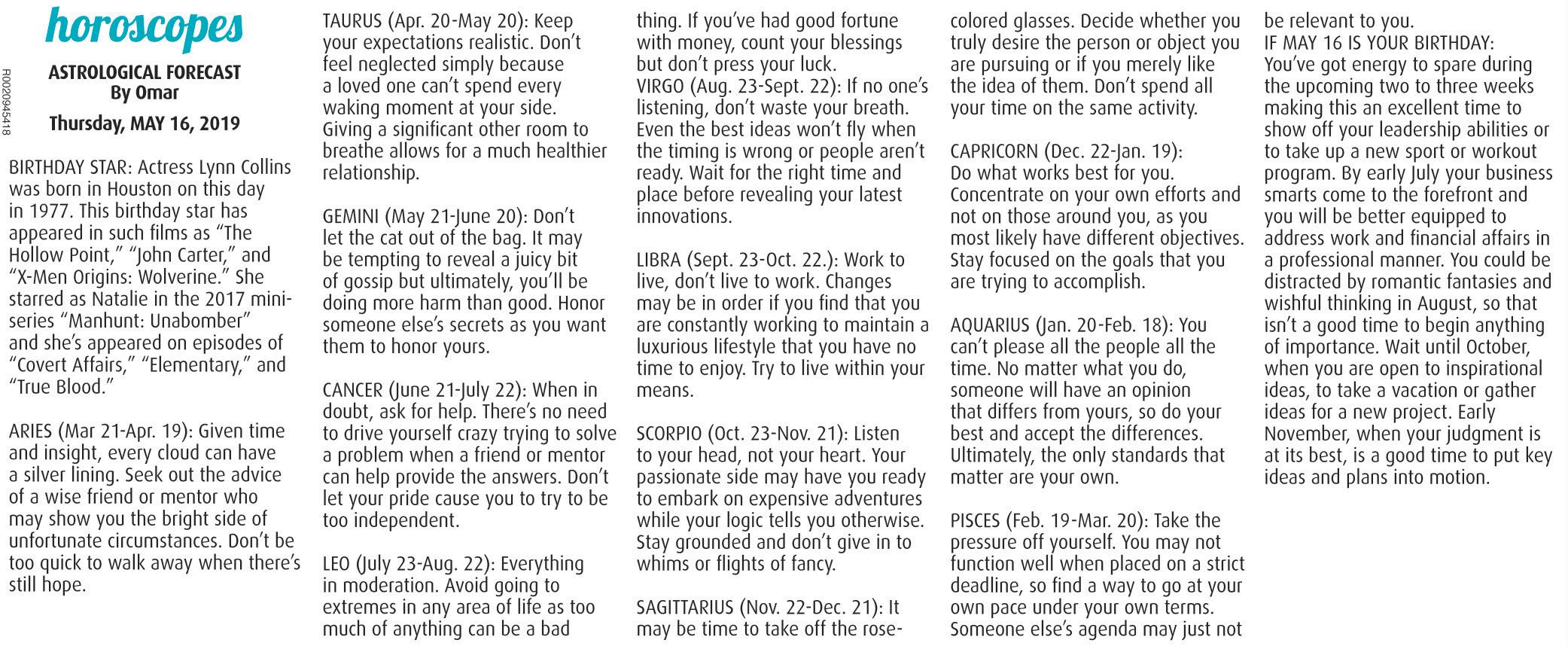

CITIZEN PHOTO BY JAMES DOYLE
Huble Homestead is marking its 30th year as a public historic site.
‘It’s the oldest house in our district’
— from page 1
It started with a farm and general store established in 1903 by business partners
Edward Seebach and Al Huble.
Al and Annie Huble had two children by 1911, too many for the little cabin in which they lived. A proper house was in order, so the Hubles built one that year out of handhewn logs forming the picturesque structure still the centre of the museum grounds. It was modelled on the Ontario farmhouses of the time, out of keeping with the rougher local homes of the day.
A year later, the log store they had been operating got a similar upgrade. The fully operational store onsite today is a replica, based on photos and other documentation, opened in 1997 as a highlight of the museum.
The history of that general spot goes back much further, however.
Evidence of Aboriginal habitation of this region dates back at least 9,000 years and part of that ancient life was harvesting the bounty of the rivers.
A fish processing camp existed about two kilometres north of the homestead when Huble and Seebach lived there. A replica camp now exists at the museum to tie the Indigenous together with the newcomer settlers.
Even the location of the homestead was connected to First Nations knowledge. The Continental Divide is an invisible jagged line running imperceptibly from the top of the continent to the bottom across which waters are naturally drawn either to the Pacific Ocean or the Arctic/Atlantic Oceans. In 1862, prospectors John Robert Giscome and Henry McDame got caught at Fort George for the winter instead of their intended destination of Fort St. James.
The time they spent with local First Nations over that winter taught them about a shortcut, a portage from the Fraser River to Summit Lake that transitioned over the Continental Divide.
Travellers from the Pacific watershed could therefore easily switch directions to the northern/eastern watershed. Huble and Seebach deliberately built their business to capitalize on that spot, since Giscome and McDames successfully advertised the shortcut to other prospectors, traders and explorers of their day.
“The only reason they built there was that vital transportation link,” said Leason. “It’s the oldest house in our district still on its original location. It’s also not the typical house you’d see around the Prince George region at the turn of the 20th century. So it is a great place to go to get your feet wet with local history, a great jumping off point
for the past 100 years of life in this area.”
The museum has to wait for the spring melt each year before it opens its doors. It has to wait longer than most spots in the area since it is more northerly than the city and it is nestled in some shadows that keep the entry road inaccessible longer than the meadows.
Leason laughed that sometimes their opening weekend is conducted in sandals and some years in boots, depending on the unpredictable spring weather.
“We’re doing pretty well with our readiness this year,” she said.
“We often only have about two weeks to do our opening prep, from the time the snow melts to the time we officially open. We do a ton of maintenance, get a lot of stuff out of storage, set up displays, stock up the general store, train our summer staff, we still have a lot of stuff on the list, but we are in good shape. We are just packing it in. It’s the same but different all the time, but that’s so nice. There’s a certain amount of routine but also a certain amount that’s new and spontaneous.”
For reasons of preservation as well as aesthetics, some of the main buildings will be getting fresh paint this year.
There is also a major restoration project happening on the staff cabin, which won’t be overt to the public but Leason said the hard work of renovation partners Central Builders, Niven Contracting, Victory Paint, and onsite caretaker Mike Hardeman will mean behind-the-scenes efficiencies that will greatly improve the functionality of the museum.
The Historic Huble Homestead will officially open for the 2019 season this Saturday with a soft start, then into the introductory event – Spring On The Homestead – running Sunday and holiday Monday.
“You can have a relaxing afternoon, your dogs are always welcome on a leash, you can have guided tours, there are a lot of public events, it is great place to bring people from out of town, and admission is by donation,” said Leason. Some special events do require preregistration.
The homestead is open seven days a week from opening to Labour Day Weekend closing. The hours are 10 a.m. to 5 p.m., admission by donation. (The suggested donations range from adults at $5, to children and seniors at $3, to families at $10.) The facilities can also be booked for special events like weddings, birthdays, family reunions, staff retreats and the like.
The Huble Homestead is located 40 km north of Prince George, six km off Highway 97 on Mitchell Road where a prominent sign guides the way.
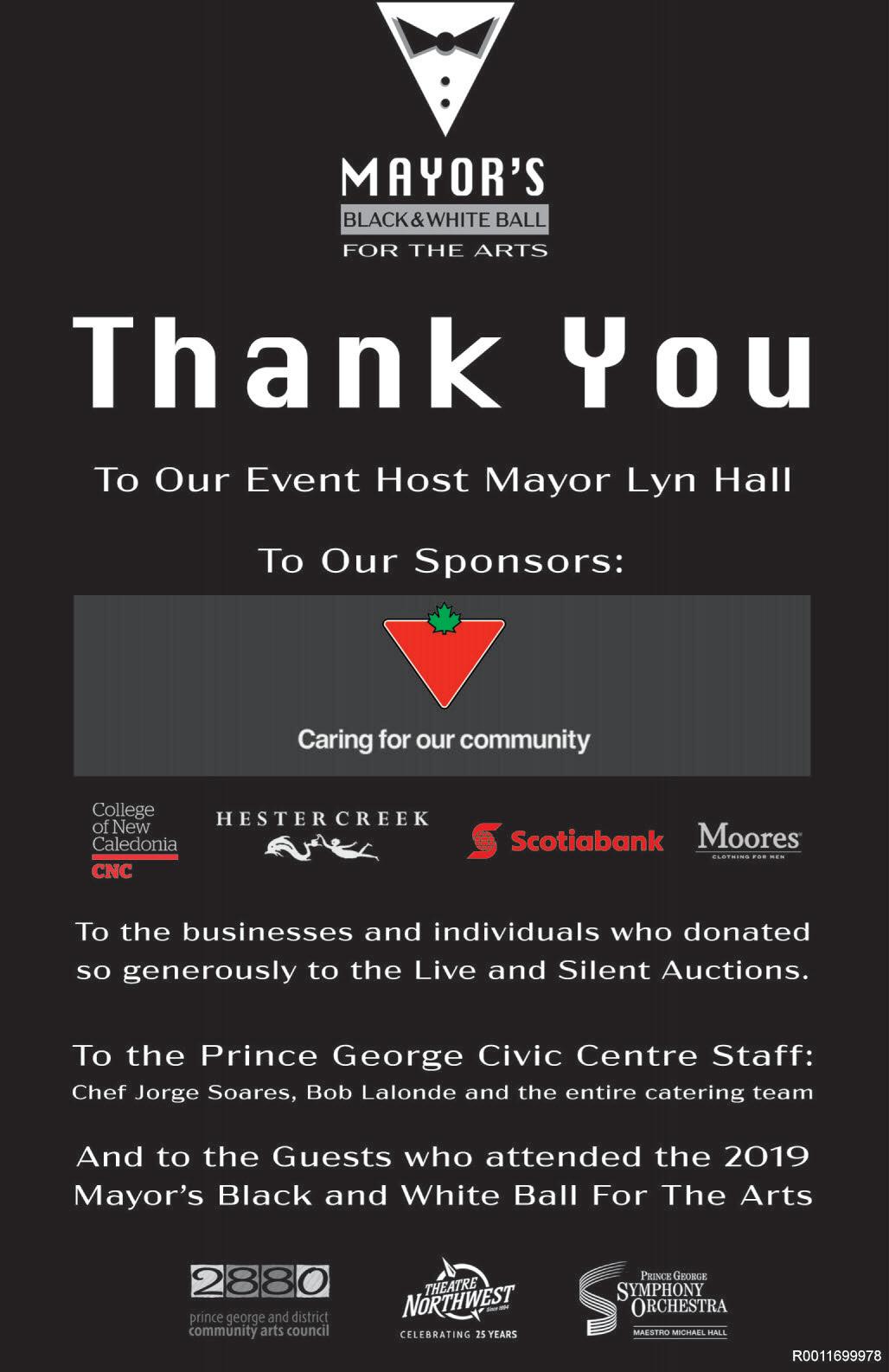
— from page 1
He credited past efforts to rid the city of beetle-killed trees and the amount of lessflammable deciduous trees on public land for mitigating the risk. He said areas where conifers dominate and steep slopes pose the biggest threat.
The city has identified 14 areas of public land in and around Prince George for treatment and is applying for grants to carry out work on six spots next year, Kelly said.
As for private land, the onus is on the property owner to take the steps needed to minimize the impact on homes and other structures should a wildfire break out.
The ongoing FireSmart campaign provides tips, beginning with creating a “fuel free space” for 10 metres around your home.
As for those who simply refuse to clean
up, Prince George Fire Rescue chief fire prevention officer Marcel Profeit said the city’s fire bylaw gives PGFR the authority to ask the property owner to hire an professional forester to carry out a hazard risk analysis.
“So if you have a neighbour that has a lot of downed trees, brush piles, those types of things, that are just sitting there, our bylaw will cover that,” Profeit said and added the process begins when PGFR’s fire prevention office is notified.
“We will do a site visit, we’ll take some pictures and we’ve enforced this part of the bylaw before,” he said but added PGFR cannot do anything about unsightly properties.
Both the Prepared BC Household Preparedness Guide and the B.C. FireSmart Manual are posted with this story at www.pgcitizen.ca.
Citizen staff
City council members threw their support behind Coun. Kyle Sampson’s proposal to see what city-owned land could be put on the sales block.
Council voted unanimously in favour Monday of directing staff to draw up a list of 10 properties with buildings on them and a list of 10 undeveloped sites to be
sold either to the current tenants or to developers.
“The sale of these properties can create a net positive impact to our overall budget, as well as increase available property for commercial and residential development and usage,” Sampson said in a notice of motion to council. Staff is to return to council with the lists by the July 15 regular meeting.
Catherine LEVESQUE
The Canadian Press
PARIS — Canada is offering softwood lumber and steel to help with the reconstruction of Paris’s famed Notre Dame Cathedral, Prime Minister Justin Trudeau said Wednesday after touring the iconic monument that was partially destroyed by fire in mid-April.
Not long after arriving in Paris, Trudeau visited Notre Dame alongside the cathedral’s rector, Patrick Chauvet, and French Culture Minister Franck Riester.
He said it was an honour to be able to exhibit some of the solidarity Canadians
feel toward their French cousins.
A fire devastated the 12th-century cathedral on April 15, with the dramatic blaze playing out live on television across the globe. Firefighters finally managed to gain control the blaze after several hours. The main structure and relics were preserved, but the cathedral’s roof and its famous spire were destroyed.
The Canadian Steel Producers Association and the Forest Products Association of Canada have already indicated their support for the government initiative. In a letter to French President Emmanuel Macron, Trudeau said Canada was proud to support France in the reconstruction.

There’s a prevailing perception among business leaders and investors and even within some First Nations communities that you can’t get a resource development project built in B.C.
Of course, that’s not necessarily the case. There are numerous examples of successful resource projects proceeding in B.C. with active participation from Indigenous communities. The Huu-ay-aht First Nations, for instance, recently signed an agreement with Western Forest Products to acquire a seven per cent stake in its Port Alberni forest operation. Last year, the Squamish Nation approved an economics benefits agreement with Woodfibre LNG providing the green light for the construction of a $1.6 billion liquefied natural gas (LNG) processing and export facility.
However, these projects have been largely overshadowed by stark images of hereditary chiefs from the Wet’suwet’en First Nation blockading the Coastal GasLink LNG pipeline near Houston last January. These protests highlighted the rift between hereditary chiefs of the five Wet’suwet’en clans and the elected band council, which supports the pipeline. This situation is particularly troubling given
that Coastal GasLink signed community and project agreements with all the elected Indigenous bands along the pipeline route in B.C.
Leading up to the upcoming Indigenous Resource Opportunities Conference in Nanaimo this month, many business leaders are telling me they’re concerned that the impending passage of federal Bill C-262 implementing the United Nations Declaration on the Rights of Indigenous Peoples (UNDRIP) will embolden activists further to challenge resource projects. They fear UNDRIP will herald a fundamental shift in the legal landscape governing Indigenous rights and title, potentially stopping resource projects in their tracks.
If the Senate passes Bill C-262, Canada would be the first country in the world to harmonize its federal laws with UNDRIP.
In the provincial throne speech, Premier John Horgan committed to make B.C. the first province in Canada to introduce legislation to implement UNDRIP, which is a commendable goal.
Among the 46 guiding principles in UNDRIP, Article 32 states that governments shall consult and co-operate with Indigenous Peoples and obtain “their free and informed consent” prior to the approval of any project affecting their lands and territories. Some
critics have characterized this as a First Nations veto over resource projects. What it really does is reaffirm government and industry’s duty to consult with First Nations, which has been upheld by numerous court rulings and has become standard business practice for companies building positive working relationships with First Nations. Granted, UNDRIP is not a magic bullet that’s going to end decades of conflict, nor is it a fatal blow to resource development.
It’s an opportunity for First Nations, government and industry to develop a framework for meaningful consultation that meets the legitimate needs of everyone involved, provided all parties do their part to make it work.
It’s incumbent upon the federal and provincial governments to develop progressive policies around UNDRIP that facilitate healthy dialogue and joint decision-making for resource development projects.
For their part, First Nations need to understand that accountability for giving free and informed consent is a two-way street. Indigenous communities need to look at all sides of the equation to inform themselves about available economic opportunities, associated risks and how proposed projects fit within the long-term economic, environmental and cultural goals of the

At last Monday’s city council meeting, our council members determined that they could relax their spending oversight of our city administration.
Our council reps voted unanimously to recommend a change that would allow the city to overspend on capital projects up to five per cent of the total operating budget ($7.5 million) without coming to city council for authorization.
Previously, the allowable amount was $1 million.
The administration’s argument for this change was that with such a large budget (approximately $150 million operating and $50 million capital), it was easy to go over budgeted amounts by a million and city employees did not want to be frequently coming back to council and requesting changes.
Sounds OK when you say it quickly, but what is really happening here is that this recommendation would have our council give up a portion of its cost control ability by approving this request. Now, the city can run over budget on capital projects by as much as $7.5 million before it has

to bring that issue to the attention of our council.
Note also that the five per cent overspend is tied to the operating budget amount but is being applied to the capital budget.
In effect, this change allows the city to overspend on its approved capital budget (assuming the budget is $50 million) by 15 per cent.
Before Monday’s decision, our council would be aware of cost overruns when they were smaller and would then have more flexibility concerning where the additional money was going to come from or whether the scope of the work should be reduced to fit the budget.
Now our council only finds out about overruns when they exceed $7.5 million (more in the future because the limit is five per cent of our operating budget so the limit in actual dollars increases as our operating budget increases).
Council would then be forced to borrow money or take money from another account to pay these bills.
This change also means that the city can withdraw $7.5 million from strategic reserves and allo-


cate the funds elsewhere without council approval.
Council would then have to replenish the reserve fund by increasing taxes or depleting another reserve fund.
Our council requires more oversight over our city’s spending, not less.
Oversight authority is useless though, if our council has no desire to exercise it.
The council members have been quite clear in that they are unanimous with spend, spend, spend.
This month, council members voted (unanimously of course) to increase spending on the library entrance from $2.67 million to $3.95 million and while they were at it, they increased spending on the library reception area from $388,000 to $410,000.
During our most recent city elections, several of our council members boasted that if elected “I will be working for you.”
I’m not sure who the city council is working for but our council is not working to control costs and it is not working to minimize our annual tax burden.
Alan Laundry Prince George

community, rather than just focusing on environmental aspects they don’t like. In many communities, it’s a choice between participating in sustainable resource development or continuing to rely on the Crown for their economic and social support needs. Finally, industry needs to understand that the rules of the game are changing. Companies have to put more effort into relationship building, engaging First Nations earlier in the process rather than after they’ve developed their business plans. First Nations are looking to build capacity, so industry should think beyond straightforward resource extraction and focus more on value-added production that supports long-term economic development within traditional territories.
It may be that UNDRIP results in less development in some areas of the province. However, if First Nations, government and industry move forward on the premise that trust and respect get results, then this new legislation could be instrumental in laying the foundation for creating a more prosperous, sustainable and equitable economy for all British Columbians.
— Dallas Smith is president of the Nanwakolas Council in Campbell River and chairman of the Indigenous Resource Opportunities Conference.
Canada’s federal government is currently working to pass a bill that would provide pardons for people convicted of minor cannabis possession. With a federal election around the corner, it may be too little, too late.
As a result of mounting pressure, Canada’s federal government is now struggling to pass this bill before politicians leave the capital for the summer break.
If the bill does not pass, it is unlikely to do so before a national election this fall, leaving tens of thousands of lives hanging in the balance.
It has been a little over six months since Canada legalized recreational cannabis, and by most accounts this national experiment has been a relative success. What Canadian legalization still lacks, however, are the important measures needed to repair the damage caused by almost a century of prohibition. American legislators should take note.
As is the case in many other jurisdictions, Canadian drug law enforcement is heavily racialized. Data gathered from Toronto and other major Canadian cities show that black and Indigenous people have been arrested for minor cannabis possession at rates as high as five and nine times that of whites, respectively.
This means that black and Indigenous people have been disproportionately burdened with the outcomes of a criminal record – reduced educational and employment opportunities, poorer housing prospects and travel restrictions – for engaging in an activity enjoyed by a significant proportion of the Canadian population.
Unlike the narrative now dominant among the U.S. 2020 Democratic hopefuls, Canada’s move towards legalization was never about social justice or reparations.
Having promised recreational
cannabis as part of his campaign platform, Prime Minister Justin Trudeau’s government rushed to draft and pass the Cannabis Act in time to help them secure a political win.
Addressing the racialized harms of cannabis prohibition barely featured in political debates over legalization in Canada. Instead, the focus was on promoting public health and diverting profits away from the illicit market.
While we dither over whether to provide pot pardons, equally substantive equity measures such as the reinvestment of cannabis tax revenue into the communities most harmed by prohibition, and the incorporation of the drug war’s victims into the legal cannabis industry go largely unrealized. For legalization to be a true success, these measures must be forthcoming.
Opponents were right to derail legalization in New York state last month because the proposed bill failed to adequately address social justice issues up front.
Given the nature of the political process, it can be all too easy for politicians to satisfy themselves with half-baked policies. If there is one thing that American lawmakers can learn from the Canadian example, it is that cannabis equity must be incorporated into legalization from the outset.
Given the lack of racial and economic diversity in established cannabis industries, not doing so is likely to further entrench the inequalities created by the war on drugs.
— Akwasi Owusu-Bempah is an assistant professor at the University of Toronto and director of research for the Campaign for Cannabis Amnesty. This column first appeared in theconversation.ca.
LETTERS WELCOME: The Prince George Citizen welcomes letters to the editor from our readers. Submissions should be sent by email to: letters@pgcitizen.ca. No attachments, please. They can also be faxed to 250-960-2766, or mailed to 201-1777 Third Ave., Prince George, B.C. V2L 3G7. Maximum length is 750 words and writers are limited to one submission every week. We will edit letters only to ensure clarity, good taste, for legal reasons, and occasionally for length. Although we will not include your address and telephone number in the paper, we need both for verification purposes. Unsigned or handwritten letters will not be published. The Prince George Citizen is a member of the National Newsmedia Council, which is an independent organization established to deal with acceptable journalistic practices and ethical behaviour. If you have concerns about editorial content, please contact Neil Godbout (ngodbout@pgcitizen.ca or 250-960-2759).
Mailing address: 201-1777 Third Ave. Prince George, B.C. V2L 3G7 Office hours: 9 a.m. to 5 p.m., Monday to Friday
General switchboard: 250-562-2441 info@pgcitizen.ca
General news: news@pgcitizen.ca Sports inquiries: 250-960-2764 sports@pgcitizen.ca Classifieds advertising: 250-562-6666 cls@pgcitizen.ca
Shawn Cornell, director of advertising: 250-960-2757 scornell@pgcitizen.ca Reader sales and services: 250-562-3301 rss@pgcitizen.ca Letters to the editor: letters@pgcitizen.ca Website: www.pgcitizen.ca
Website feedback: digital@glaciermedia.ca Member of the



Dr. Evan Wood, executive director for B.C. Centre on Substance Use speaks during a news conference in Vancouver on Feb. 21. Wood said the powerful, deadly drug carfentanil is becoming more common in the province.
Amy SMART The Canadian Press
VANCOUVER — A drug expert says a powerful opioid that was never intended for human consumption is becoming more common in British Columbia’s illicit drug supply and its “tremendous profitability” means the situation may get worse without intervention.
Dr. Evan Wood of the BC Centre on Substance Use said carfentanil is an elephant tranquilizer that is 100 times more potent than its cousin fentanyl, the primary culprit in the province’s overdose crisis.
But the cost of producing and moving carfentanil is so low relative to its sale value that fighting its spread will require a broader look at the drug trade, he said in an interview.
“The tremendous profitability is what makes this a game changer,” Wood said.
“We’re going to be playing Whack-A-Mole until we come to the acknowledgment that because of prohibition and the intense profitability of this, it’s going to drive increasing toxicity in the drug supply.”
Wood made the comment after the BC Coroners Service released new figures on suspected illicit drug deaths Wednesday, the same day that the B.C. government announced a public inquiry into money laundering, which Premier John Horgan said was linked to the overdose crisis.
The coroners’ figures said fewer people are dying overall from overdoses and Wood said it brings some encouragement to frontline workers who have been in the trenches fighting the crisis.
The monthly average for suspected illicit drug deaths between January and the end of March was 89, down almost one-third from the same period last year when the average was 132 people a month, the BC Coroner Service said.
But carfentanil was detected in nearly double the number of deaths in the first quarter of this year than it was for the entirety of last year. By the end of March, the synthetic opioid was found to have been involved in 64 deaths compared with 35 for all of 2018.
Fentanyl and its analogues, including carfentanil, were detected in almost 85 per cent of suspected illicit drug deaths in the first quarter of 2019, a rate slightly lower than last year.
Carfentanil began appearing in the Canadian drug supply around 2016, the same year the Canada Border Services Agency staff seized a package containing one kilogram of carfentanil that came from China, enough for millions of doses. It has also appeared in Toronto, Winnipeg and other jurisdictions.
Chief Const. Mike Serr of the Abbotsford Police Department, who also chairs the drug advisory committee for the Canadian Association of Chiefs of Police, said quantifying the profitability of opioids is difficult
since they are typically cut with other drugs rather than sold “pure.”
For comparison, he said one kilogram of pure heroin typically costs $70,000 and would be added to a cutting agent to produce two kilograms worth of drugs for street sales.
Seer said one kilogram of fentanyl costs roughly $12,500 but can be mixed with 100 kilograms of a cutting agent for street sale because it’s so potent. Estimating that profit is difficult because it may be sold under several different drug names with different concentrations, and in much smaller quantities than one kilogram at a time, but $1 million isn’t out of the ball park, he said.
When you consider carfentanil is significantly more concentrated than fentanyl, the profit margins are exponential.
“If someone said 10 years ago, can you make the perfect drug, carfentanil and fentanyl would be unfortunately the drug because it’s cheap, it’s much easier to import, it’s easier to source,” he said.
The primary source of both fentanyl and carfentanil is China, although some other Asian countries are also involved. Transactions typically occur on the dark web and the drug is delivered in small quantities through the mail, Serr said.
Given that a dose the size of a grain of sand can be fatal, Serr said that even a very skilled anaesthesiologist couldn’t produce a safe mix of the drug.
“The fact that this is being put out on the street – the risk is just enormous. It is such a potent and dangerous drug that there’s no way someone can safely say they could mix it into street drugs and someone could have any sense of safety when they take it,” Serr said.
Wood emphasized the importance of for drug users to have their supply tested at an overdose prevention site or pharmacies that offer the service free and anonymously.
Vancouver Coastal Health and the BC Centre on Substance Use are also collaborating on a new research project providing drug users with take-home testing kits to determine if the kits can be used safely.
The overall decline in overdose deaths suggests that testing and other interventions, including safe consumption sites and education initiatives – are working, Wood said.
There were no deaths at supervised consumption sites or drug overdose prevention sites, the coroners’ data shows.
But Wood said there aren’t many other jurisdictions to follow in preventing the spread of carfentanil. He has reviewed data from Ohio, where fentanyl use was followed by carfentanil, then other drugs like crystal meth.
“I think we’re girding for that here and seeing that already to some extent, but I think we’re on the forefront of harm related to this,” he said. “I think British Columbia really is the tip of the spear.”
OSOYOOS (CP) — A growing wildfire in British Columbia’s southern Okanagan region has prompted additional evacuation alerts for several properties west of the town of Osoyoos.
Residents of 13 properties along Sumac Road and Highway 3 in Cawston are being warned to be ready to leave on short notice as a wildfire sparked Monday by a burning vehicle has now scorched four
Dirk MEISSNER The Canadian Press
VICTORIA - Premier John Horgan launched a public inquiry into money laundering Wednesday, saying the depth of the criminal activity in British Columbia runs far deeper than previously believed.
Money laundering has distorted the provincial economy, infiltrated casinos, fuelled the opioid overdose crisis and increased the price of real estate, he said at a news conference flanked by Attorney General David Eby and Finance Minister Carole James.
The impact of money laundering in B.C. was highlighted in two independent government-commissioned reports released last week that connected the practice to real estate and concluded more than $7 billion in dirty money was laundered in the province last year, said Horgan.
“It became abundantly clear to us that the depth and the magnitude of money laundering in B.C. was far worse that we imagined when we were first sworn in,” he said. “That’s why we established the public inquiry today.”
Horgan’s New Democrats formed a minority government in the summer of 2017 after 16 years of B.C. Liberal governments. One of the reports by former deputy attorney general Maureen Maloney said $5 billion was siphoned into real estate in 2018, forcing the costs of homes up by at least five per cent. It said that figure could be significantly higher – upwards of 20 per cent – in Metro Vancouver.
The second report by former deputy RCMP commissioner Peter German said the infusion of illicit money into the B.C. economy led to a frenzy of buying in real estate. A previous June 2018 report by German found Metro Vancouver casinos were used to launder hundreds of millions of dollars in illicit money.
Horgan said a public inquiry will give an understanding of how the problem reached this point and how to eradicate it.
B.C. Supreme Court Justice Austin Cullen was appointed to lead the inquiry and can compel people to testify, seize records and obtain search warrants. The inquiry is expected to deliver an interim report in 18 months and a final report by May 2021.
square kilometres of bush.
The evacuation alert is in addition to one issued shortly after flames from the vehicle on Highway 3 spread into the surrounding grass and trees.
The BC Wildfire Service says the blaze is burning in steep terrain and is considered out of control.
Forty firefighters backed up by two helicopters are working to contain it.


Colette DERWORIZ
The Canadian Press
EDMONTON — This year’s fire season forecast is normal across the country for the month of May, but the hazard is expected to increase for much of Western Canada this summer.
Natural Resources Canada’s Northern Forestry Centre in Edmonton, one of five research centres with the Canadian Forest Service, provided the update on Wednesday.
“For the month of May, we are showing normal or below-normal levels of expected fire severity through the entire country,” said Richard Carr, a wildland fire research analyst. “However, through the summer beginning in June and extending through August, we’re seeing the western-most regions –British Columbia, Yukon, western Alberta – that have increased risk of fire severity and therefore the possibility of more fires.”
The daily forecast right now shows the fire danger is extreme in Yukon and parts of the southern Prairies, but officials said that can change quickly with the weather.
“Even during average years, bad fires can happen if they happen in the wrong place at the wrong time,” said Bruce Macnab, the centre’s head of wildland fire information systems.

There are already several fires burning across Western Canada.
In British Columbia, an aggressive wildfire is burning west of Osoyoos near the United States border, and crews spent the weekend battling fires near some northern communities.
Alberta has 23 active fires, one
of which is classified as out of control north of Peace River.
The most fires so far this year have happened in Manitoba, but 38 of those 57 fires have been put out. The province’s website says the fires have burned through 7,454 hectares.
Federal officials said the forecast
they provide doesn’t predict the number of fires, only the weather conditions that could lead to more fires.
“We need ignitions to actually create the fires,” said Carr.
They said more than half of all wildfires are caused by humans and lightning strikes account for
the rest.
Ellen Whitman, a fire research assistant, said the amount of area that burns increases annually across Canada.
“Historically, we really do experience a lot of fire in this country,” she said. “In recent decades, however, we’ve been seeing increases in those hot, dry, windy daysespecially in Western Canada.
“The period of time ... generally referred to as the fire season is extending or lengthening. In some areas, it’s becoming longer by weeks due to earlier springs and also later autumns.”
Whitman said a changing climate will continue to worsen the fire season.
“We expect fires to become more common in Canada, in terms of increasing in numbers, increasing in area burned and also becoming more frequent.”
The Canadian Forest Service works with provinces and territories on wildfire management, provides maps of daily fire weather and behaviour, notes fire locations and does monthly seasonal fire severity forecasts through an online information website.
Monthly forecasts help to determine trends expected for the upcoming fire season.
Canadians can also see daily fire danger maps online at http://cwfis.cfs.nrcan.gc.ca/home.

The Citizen archives put more than 100 years of history at your fingertips: https://bit.ly/2RsjvA0
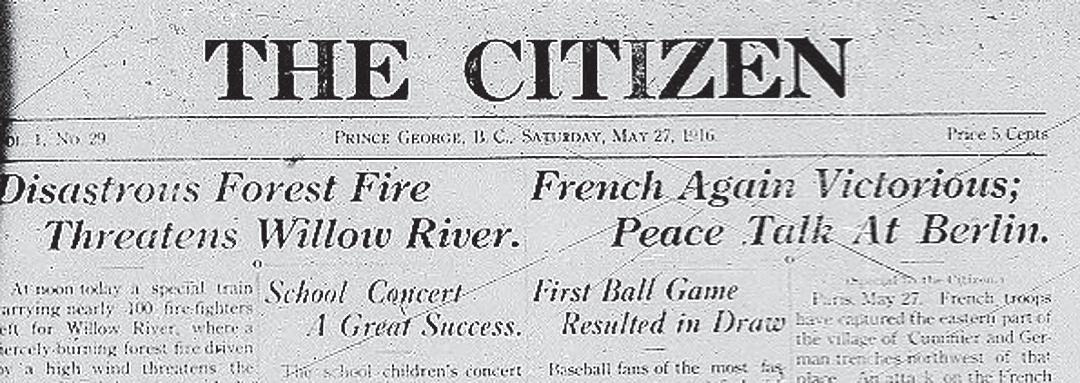

Spruce Kings winger Nolan Welsh, right, waits for the rebound of Max Coyle’s point shot on Portage
second-period power play. Welsh got to the loose puck and tapped it on for the Kings’ fourth goal in a
Championship in Brooks,
Ted CLARKE Citizen staff
tclarke@pgcitizen.ca
It was all over before it even began for the Portage Terriers.
After three straight losses to start the national junior A hockey championship in Brooks, Alta., they knew there was nothing they could do to extend their season when they lined up Wednesday night to face the undefeated Prince George Spruce Kings. The Manitoba champions had nothing to lose, knowing they’re going home early, eliminated from playoff contention, and the Kings showed no sympathy, winning 5-1 to improve to 3-0 and move back into a firstplace tie with the Brooks Bandits.
It didn’t take long for the Kings to show why they’re one of the favourites to be playing for the trophy Sunday afternoon. They broke out to a 3-0 lead in the first period on goals from Dylan Anhorn, Chong Min Lee and Ben Brar and never looked back in what has to rate as their most dominant game yet at the five-team tournament.
“Our gameplan was to play with pace and use our o-zone time to our advantage,” said Kings captain Ben Poisson.
Prince George certainly took advantage of the Terriers’ loose defensive coverage and had the Terriers chasing their own tails in the Portage end often in the game.
Anhorn got the Kings started, just 55 seconds in, when he took the puck in the right circle and avoided Sam Huston’s stick-check attempt as he dragged it into the slot, firing high over Nathan Moore’s blocker. Lee made it 2-0 with his second goal of the tournament at 7:53. Lucas Vanroboys used his big body to dig the puck out of crowd in the corner for Lee and he went low with his shot to the far side and the puck found the net inside of Moore’s skate. Brar’s goal was a rocket from the circle, at 16:01 of the first.
Kings goalie Logan Neaton, who notched the win to improve his playoff record to 213, saw very little action until Jay Keranen took a penalty a minute before the first intermission. Neaton came up with a slick toe save to deny Chase Brakel and got some help from the goalpost when Huston fired from the point with 10 seconds left in the period.
Keenan Rancier took over for Neaton to start the second period for his first game action since the Kings’ last game of the BCHL regular season Feb. 23 and was forced to make a tough save early with the Terriers still on a power play which carried over

from the first period. It was one of the few times the Terriers’ offence had any kind of pressure in the Kings’ zone. They outshot Portage 44-10 and through three games have built a 114-44 shot advantage. Rancier stopped six of seven shots he faced.
“You know what Logan Neaton is, he’s pretty spectacular and you can’t really put Keenan in until you come to a game like this,” said Kings defenceman Max Coyle.
“He deserved 100 per cent to be in that game. He’s got one of the best attitudes as a hockey player I’ve ever seen in my entire life.”
The Kings have not been severely tested in any of their games this week in Brooks.
They skated to a 5-1 win over the Oakville Blades in their opener Sunday, then shut out the Ottawa Junior Senators 4-0.
Five Spruce Kings scored goals Wednesday and they’ve now outscored their national opponents a combined 14-2. They weren’t sure what to expect from the Terriers, who had a one-goal lead on the Bandits Sunday until the last minute of the second period, eventually losing 5-3.
“Some of the other teams have been having troubles with them and we decided to go in there as hard as we can and it ended up working out for us,” said the 21-year-old
Anhorn 2 (N.Poisson, Manz) 0:55
Lee 2 (Vanroboys) 7:53
Brar 2 (Ahac) 16:01
Coyle. “They were out and I’m not sure if they could do any better. I think they just kind of gave up. They had a couple of older guys who decided, ‘It’s the last game of my hockey career, why am I going 100 per cent?’ That was kind of their mentality for the game.”
The Terriers took seven minor penalties in the first two periods and five of them were stick infractions.
The Kings’ power play has been deadly this week in Brooks, scoring on four of its 11 chances (36.4 per cent) heading into Wednesday’s game, and they struck again 6:42 into the second period. Nolan Welsh was in perfect position to jam in a loose puck in the crease that got behind Moore after Coyle let go the point shot. That was the only goal of the second period.
In the third, the Terriers got their only goal 3:39 into the period. Orca Weisblatt was down on both knees with the puck in the face-off circle when he passed into the slot.
The puck ticked off the stick of Kings defenceman Liam Watson-Brawn right to Braden Billaney and he had an open net to shoot the puck in behind Rancier.
Lee and Nick Poisson combined for the fifth P.G. goal a few minutes later on a 2-on-
Penalties – Gorski POR (tripping), Mickoski POR (slashing) 12:23, Billaney POR (cross-checking) 16:01, Keranen PG (hooking) 18:51. Second Period
4. Prince George, Welsh 1 (Coyle) 6:42
1 break. Lee’s shot bounced off Moore’s trapper and Poisson picked up the rebound just outside the crease and roofed in his third goal of the tournament.
They know it’s going to be a different story tonight (6 p.m. PT) when they play the host Bandits to close out the roundrobin tournament in a game to determine first place.
The teams met in a hotly-contested Doyle Cup series which the Kings wrapped up in six games on May 4. Tonight’s winner gets to choose which semifinal game they will play on Saturday, either at 1 or 6 p.m. PT. The schedule has worked in the Kings’ favour, giving them three games in Centennial Regional Arena to get used to the rink before they have to face the Bandits.
“The way we’re looking at it right now is it’s going to come down to us and Brooks, if everything goes as planned, and we’re excited to get our first crack at them playing in front of a packed building,” said Poisson.
“We haven’t seen them in a little bit, we had a good series with them so it should be a good one. They’ve got a special night going so it should be a sold-out game and it should be fun.”
Oakville and Ottawa, both 1-2, will meet today at 1 p.m. PT to determine third place. LOOSE PUCKS: The Terriers were eliminated from playoff contention Tuesday afternoon when they lost 2-1 to the Oakville Blades to fall to 0-3. The Terriers won the Manitoba Junior Hockey regular season with a 46-11-2-1 record and went 12-2 in the MHJL playoffs, then beat the Saskatchewan league champion Battlefords North Stars is a seven-game Anavet Cup series… Portage la Prairie will host the NJAHC next year…. All Spruce Kings games are being broadcast live on CFIS FM 90.3 with Kyle Anderson and Brendan Pawliw providing the play-by-play and colour commentary… Thursday’s games and the two semifinals on Saturday will be webcast on hockeycanada. ca. Sunday’s final at 2 p.m. PT will be televised live on TSN 3… Victoria Grizzlies centre Alex Newhook was named Wednesday the most valuable player in the CJHL. Newhook won the BCHL scoring race with 38 goals 64 assists and 102 points. Other finalists for the award were: F Josh Tripp, Swan Valley Stampeders (MJHL); F Dylan Holloway, Okotoks Oilers (Alberta Junior Hockey League); F Brodie MacArthur, Summerside Western Capitals (Maritime Hockey League); and G Jett Alexander, North York Rangers (Ontario Junior Hockey League).
The Canadian Press
While Brooke Henderson is enjoying some time off at home, she’s ready for a busy stretch.
The Canadian golf star, who put on a clinic for youngsters at the Kevin Haime Kids to the Course Classic at Eagle Creek Golf Club on Tuesday, will play six weeks in a row starting next week. After another week off, the 21-year-old native of Smiths Falls, Ont., will play four more tournaments in a row.
Henderson also will be in Aurora, Ont., on July 2 for an appearance leading into this year’s CP Women’s Open in August, where she is the defending champion.
Although Henderson has a win this year – her eighth LPGA Tour victory at the Lotte Championship in Hawaii tied her for the all-time wins record by a Canadian – she has missed two cuts, which she admitted was “unlike” her. Earlier this year, Henderson had to drop out of two events due to illness.
Still, she said she’s been pleased with her year.
“Winning is fun,” she said. “It’s fun for me to have these goals, and they’re realistic goals. This is a big stretch and if I can get my game going, I can put myself into contention.”
Henderson and her older sister/ caddie Brittany don’t return home too often these days – although their family still lives in Smiths Falls, the siblings spend more time at a home in Naples, Fla. But even when Brooke’s not in the region, her presence is felt.
Haime runs a driving range in Ottawa’s west end and has a junior golf initiative that has given many youngsters free memberships for the past 12 years.
He said Henderson’s impact on junior golf in Canada is “immeasurable.”
“Kids just idolize her. It’s not just girls. It’s boys. It’s teenagers,” he said. “Everyone thinks Brooke is awesome.”
During the clinic, Henderson told stories from her time on the LPGA Tour and gave some advice to young golfers.
For her own career, Henderson said she’ll be trying to improve her short game over the next few weeks.
While her scoring average ranks

fourth on the LPGA Tour, her putting has held her back this year.
She’ll be switching putters for next week’s Pure Silk Championship.
Henderson said she enjoys the River Course at Kingsmill Resort in Williamsburg, Va., where she finished fourth in 2018.
“(The course) is lush and treelined which I love. I’ve played OK there before, but I feel potentially I could play really well there,” she said. “I always look forward to that week.”
Henderson said she’s also excited to play in the U.S. Women’s
Open, the next LPGA major, May 30-June 2 in Charleston, S.C. She competed at the U.S. Women’s Amateur in 2013 at the Country Club of Charleston, the host club for this year’s event, and said that should give her a boost.
Henderson, who withdrew after the first round of last year’s U.S. Women’s Open due to the death of her grandfather, said the tournament is special.
“You get there and the atmosphere is just so different,” she said. “The U.S. Women’s Open is a big one that hopefully I can get before my career is over.”
Henderson also has enjoyed watching some golf recently. She said seeing fellow Canadian Corey Conners win his first PGA Tour title in April was “unreal.”
The victory, Henderson said, inspired her to practise a little more and boosted her energy on the course.
“It’s hard work for sure, but it’s also my dream to be out here,” said Henderson. “When I have a chance to win, it potentially makes it even better – it brings a smile to my face because as a little girl that’s what I dreamt of, and now I’m living that dream.”
The Canadian Press
The tentative agreement between the CFL and CFL Players’ Association gives American players more incentive to stay in the league.
According to two sources, the proposed three-year deal includes provisions for Americans to be deemed Canadian after as little as three years. Internationals who spent three years on one CFL team will be considered Canadian in their fourth years while Americans who spent four seasons north with more than one club will be considered a national upon their fifth season.
Both scenarios are aimed at protecting veteran Americans and giving them more reason to stay put. Canadian starters – especially offensive linemen – are among the league’s highest-paid players after No. 1 quarterbacks.
For years, CFL general managers have lamented there’s not enough good Canadian talent to go around the league. This would not only boost the Canadian content but also provide a more solid base considering the expansion Atlantic Schooners could begin play as soon as 2020.
The CFL and CFL Players’ Association reached a tentative deal early Wednesday after two straight marathon bargaining sessions. They met into the night Monday, reconvened early Tuesday and continue talking until early
Wednesday morning before coming to terms.
The new deal is pending ratification by the players and acceptance by the league’s board of governors. CFL officials were expected to approve it at a board meeting Wednesday in Toronto.
The CFLPA presented the agreement to team reps Wednesday and it was expected to then be given to the union membership later on.
A ratification vote date hasn’t been divulged but is not expected to be held until sometime next week. The current contract is set to expire Saturday.
With a tentative deal in place, players are expected to report for the start of CFL training camps Sunday.
Other proposals reportedly in the tentative deal, according to the sources, include:
• A rookie salary scale that’s said to start at $85,000 for the first overall pick, then go down from there depending upon draft position. Currently there’s no rookie cap in the CFL.
• A proposal to incorporate a “global” player.
• Players to receive three years of medical coverage, up from just one year currently. Health and safety was a majority priority during bargaining for the CFLPA.
• Canadian quarterbacks to count towards the Canadian ratio of 21 nationals on each team’s game-day roster. The current deals calls for three quarterbacks of any nationality on the
roster. The Canadian ratio will remain constant throughout the new agreement.
• Players to receive 20 per cent of revenues from the CFL TV deal as well as commissioner Randy Ambrosie’s CFL 2.0 initiative.
• CFL salary cap to continue to increase by $50,000 annually. Minimum salaries are to increase to $65,000 from $54,000 in second year of new deal.
The tentative agreement would run concurrent to the CFL’s television contract with TSN, which goes through the ‘21 campaign. It also gives both sides time to see what fruit the 2.0 initiative bears.
Acceptance of the deal would eliminate the prospect of an ugly two-tiered CFL player strike. Had there been no deal reached by Saturday, players with the B.C. Lions, Saskatchewan Roughriders, Winnipeg Blue Bombers and Montreal Alouettes would’ve been in a legal strike position come the start of training camp Sunday and wouldn’t have reported.
Players on teams in Alberta (Edmonton and Calgary) and Ontario (Ottawa, Toronto and Hamilton) would’ve had to show up because they wouldn’t have been in a legal strike position until May 23. But that’s when the union could’ve orchestrated a full work stoppage.
However, Ramsay continually stated the CFLPA’s top priority always was to secure a fair and equitable deal with the CFL.
Conners sole Canadian in PGA Championship
TORONTO (CP) – There’s no doubt that Corey Conners’s life has changed since winning the Valero Texas Open nearly six weeks ago.
Monday qualifiers and doubts about where he’ll play next have given way to guaranteed tournament berths for the rest of the season, a PGA Tour card for 2020 and a spot in this week’s PGA Championship. That higher profile comes with some other perks too, including staying at prestigious hotels when coming to Toronto for meetings and getting recognized by golf fans.
“It’s a life-changing thing to win, but I still feel like the same person,” said Conners.
“Not going to be changing up my lifestyle very much. These bonuses are really awesome, a nice treat, but I’m not going to do a whole bunch of things differently.”
Conners went straight to the Masters after winning the Texas Open – the organizers flew him, his wife Malory and his agent directly from San Antonio to Augusta, Ga. – and then played in the RBC Heritage and the Zurich Classic of New Orleans. He took the first week of May off, visiting Toronto for a breakfast meeting with sponsor RBC, getting in a couple of practice rounds in at Hamilton Golf and Country Club, and then going to his hometown of Listowel, Ont., to see his mom and mother-in-law ahead of Mother’s Day.
That busy schedule means he hasn’t had much of a chance to absorb what the Texas Open win means for him, but there are moments where it sinks in.
“I think when we got home, back to Florida, and we were able to just sit down on our couch and think ‘wow, we won a PGA Tour event,”’ said Conners, who said he’ll put the trophy into his living room when it arrives. “I know how it is to win and how many people are trying to win week in and week out.”
Another immediate benefit is a berth in the PGA Championship, the second major of the season. It’s his first time playing in the tournament, having played in the Masters as an amateur in 2015 and the U.S. Open in 2017. This year’s PGA Championship is the first to be played in May since 1949, and the cooler temperatures at Bethpage Black Course in Farmingdale, N.Y. had players bundling up in toques, thick gloves and raingear during practice on Monday.
Conners likes to think that might give him, the only Canadian in the field, a distinct advantage.
“I grew up playing in the cold and I’ve embraced the challenge the additional challenge that brings,” Conners said. “It’s funny, whenever there’s bad weather on tour everyone I walk by they always joke ‘Oh, you must love this!’ and I’m like ‘No, it doesn’t mean we like the cold and the rain.’
“But I’m used to it. My dad used to play golf with me in miserable conditions back in Listowel. It would be pouring rain and we’d be the only people out there getting soaked in our rain suits.”

Lori EWING The Canadian Press
MILWAUKEE — Brook Lopez scored 29 points, while Giannis Antetokounmpo added 24 points and 14 rebounds and the Milwaukee Bucks beat the Toronto Raptors 108-100 in Game 1 of the Eastern Conference finals on Wednesday.
Kawhi Leonard had 31 points, while Kyle Lowry, playing with his left thumb wrapped after spraining it on Sunday, added 30 points and eight rebounds and never stopped hustling, making like a beach volleyball player with a spectacular thirdquarter dive to bat in a ball headed out of bounds. Pascal Siakam had 15 points for the Raptors, who led for most of the first three quarters.
Game 2 of the best-of-seven series is Friday in Milwaukee, then the series shifts to Toronto for Games 3 and 4.
Backed by their rock-solid defensive effort, the Raptors dominated for most of the night, taking a 13-point first-quarter lead, and responding well to every Bucks run. And when Siakam’s three-point shot dropped at the buzzer to end the third, it sent Toronto into the fourth with an 83-76 advantage.
A pair of Nikola Mirotic free throws capped an 8-0 Bucks run to begin the final frame, giving the home team their first lead since early in the first quarter. Malcolm Brogdon’s fast-break dunk put the Bucks up by five and ignited the capacity Fiserv Forum crowd of 17,345 that included Bucks legend Oscar Robinson and Pearl Jam bassist Jeff Ament.
A pair of Lowry three-pointers a minute and 19 seconds apart tied the game at 9898 with 3:31 to play, but Lopez responded with a dunk and three-pointer and the Bucks took a four-point lead into the final 1:55.
Both teams turned the ball over and missed shots and then Eric Bledsoe’s pair of free throws with 42 seconds to play all but sealed the victory for Milwaukee.
One of the big positives on the night: the Raptors, whose three-point shooting has been well down compared to their regularseason numbers – they were 7-for-30 on Sunday – had 10 threes in the first half alone on Wednesday. They shot 15-for-42 from long distance on the night.
While the Bucks waited a week between dispatching Boston in five games in the conference semifinals, the Raptors were back on the court three nights after their thrilling Game 7 victory over Philadelphia.

Rather than lament the lack of rest, Raptors coach Nick Nurse suggested his team could benefit from the momentum.
He was right – at least for the first three quarters. The Raptors had the Bucks on their heels from the tipoff, taking a 13-point lead on a driving layup late in the first quarter. The Raptors made six three-pointers in the opening frame and led 34-23 going into the second.
An Antetokounmpo dunk capped a 7-0 Bucks run that sliced Toronto’s lead to three points late in the second quarter. But the Raptors closed strong to take a 59-51 lead into the break. And when Leonard mauled
Antetokounmpo under the basket on the last play of the half – no foul was called –the crowd booed long after both teams had departed for their respective locker-rooms.
The Bucks twice pulled to within four points in the third, but the Raptors were able to extinguish any Milwaukee momentum.
The Raptors were rebuilt with a big goal in mind: their first appearance in the NBA Finals. They finished second with 58 wins behind the league-leading Bucks (60 wins) in the regular season. They’re making their second conference finals appearance in franchise history (2016 was the first). The
Bucks are playing in their first conference final in 18 years and are looking to return to the finals for the first time in 45 years.
The Raptors dispatched the Bucks in six games in the opening round in 2017, but Antetokounmpo has improved by leaps and bounds in the two seasons since.
The Bucks swept Dwane Casey’s Detroit Pistons in the opening round, while the Raptors ousted Orlando in five games. Milwaukee won the regular season series 3-1.
The winner of this series will have homecourt advantage for the NBA Finals against either the Golden State Warriors or the Portland Trail Blazers.
Joe HARRIS The Associated Press
ST. LOUIS — Erik Karlsson scored 5:23 into overtime after the officials missed a hand pass by Timo Meier, and the San Jose Sharks rallied to beat the St. Louis Blues 5-4 on Wednesday night to take a 2-1 lead in the Western Conference final.
Meier used his right hand to knock a loose puck toward the front of the net. Gustav Nyquist then passed it over to Karlsson, who beat Jordan Binnington for his second goal of the game.
Binnington and the Blues complained immediately about Meier’s pass. The officials huddled while Karlsson and the Sharks celebrated, but the play wasn’t reviewable and the goal stood.
Game 4 of the best-of-seven series is Friday night in St. Louis.
The Blues led 4-3 before Logan Couture tied it with 61 seconds left in regulation. Joe Thornton scored twice for San Jose, and Martin Jones made 28 saves.
David Perron had two goals for St. Louis, and Vladimir Tarasenko and Alexander Steen also scored. Colton Parayko had three assists, and Jordan Binnington made 27 stops.
The Blues trailed 2-0 after one and 3-1 in the second before rallying.
Tarasenko, who faced criticism after a lacklustre performance in Game 1, started the comeback with his first goal in six games at 4:05 of the second.
Perron tied it by beating Jones on the stick
side with a wrist shot from the left dot with 3:57 left in the period.
St. Louis went on a power play after Brent Burns took down Oskar Sundqvist late in the period.
Perron scored his second goal of the series a minute later, giving the Blues the lead with their first power-play goal in 19 chances with the man advantage.
It was Perron’s first multigoal playoff performance in 73 games.
After an early Blues push, the Sharks grabbed control in the first.
Blues defenceman Vince Dunn departed with 8:35 left in the first after getting hit in the face by a Brenden Dillon shot, forcing St. Louis to mix and match five defencemen.
San Jose then jumped in front when
Karlsson intercepted a Joel Edmundson clearing attempt and beat Binnington with a wrist shot through traffic at 13:37. Thornton made it 2-0 with 3:02 left in the first, scoring on a backhander after Robert Bortuzzo blocked a Marc-Edouard Vlasic shot.
Steen got the Blues on the board at 1:18 of the second, but Thornton answered for the Sharks 18 seconds later with his second goal of the game, giving him his first multigoal playoff game over 176 games in a 22-year career.
NOTES: The Blues and Sharks entered the game tied for first in the NHL with 38 points in the post-season from their defencemen.
Game 4 at St. Louis on Friday night.
The Washington Post
The first person to set foot on the moon had one last task before he came home.
Neil Armstrong needed to pick up rocks – as many as he could carry, as interesting as he could find. The material he collected would constitute humanity’s first samples taken from another world.
With less than 10 minutes to go before the end of his moonwalk, Armstrong used tongs to pile about 20 rocks into a specialized collection box. Deciding it wasn’t full enough, he scooped an additional 13 pounds of lunar soil into the container.
Today, a tablespoon of that soil sits in a sealed dish in a locked and windowless lab at Johnson Space Center in Houston. It is a prized piece of the Apollo program’s greatest scientific legacy: 385 kg of moon rocks.
For 50 years, research on these rocks has transformed our understanding of the moon, revealing the circumstances of its birth and the reasons for its mottled face. Now, NASA has decided to release three new samples for analysis – samples that no scientist has touched.
The upcoming experiments, on vacuumsealed cores and a long-frozen rock, can be performed only once, at the precise moment the samples are opened. That’s why the materials have been held back since they were retrieved from the moon, said Ryan Zeigler, who curates the Apollo rocks collection. NASA was waiting for the right scientists, with the right technologies, at the right time. With Apollo 11’s 50th anniversary this year and renewed interest in the moon ahead of a proposed return mission, Zeigler said, the right time is now.
NASA’s Lunar Sample Laboratory, a maze of gleaming metal cabinets and spotless linoleum floors, was built in the 1970s to house the rocks brought back from six moon missions.
A sophisticated HVAC system, designed to keep the air 1,000 times cleaner than in the outside world, fills the facility with a faint artificial breeze. Scientists enter only after donning special white jumpsuits, caps and booties to limit contamination. These are some of the most valuable rocks in the solar system, Zeigler said. Just look at what they have revealed so far.
Before the Apollo 11 mission, scientists couldn’t agree on where the moon came from. It’s a misfit in the solar system – a much larger relative to its planet than almost any other moon. Some speculated

that it was once an independent object that was “captured” by Earth’s gravity. Others proposed that the satellite formed in orbit alongside Earth when the planets were coalescing out of a primordial dust disc.
Many grade-school textbooks taught that it was, in fact, a blob of Earth that had been flung away by our planet’s spin; the Pacific Ocean was thought to be a scar from this ancient loss. All of those theories had to be discarded as soon as scientists saw the first Apollo rocks.
The moon materials were extraordinarily ancient – as old as 4.5 billion years. Although they contained many of the same chemicals as rocks from Earth, they were startlingly poor in “volatiles” – molecules like water and carbon dioxide that easily vaporize when heated. Some contained features produced only in cataclysms – showers of meteorites, blasts from volcanoes, or barrages of particles from the sun.
At a conference to discuss the initial findings six months after Apollo 11 returned to Earth, no one could agree on what all this evidence meant.
Then, toward the endof the conference, geologist John Wood explained how the clues fit together. He realized that the strange white flecks in Armstrong’s hastily gathered soil sample belonged to an unusual type of rock called anorthosite, which forms when the mineral feldspar crystallizes out of molten rock.
At some point, Wood reasoned, the moon must have been completely covered in a magma ocean, in which anorthosite rocks floated like icebergs. The molten world would have cast an eerie, blood-red glow in Earth’s night skies.
To confirm Wood’s theory, scientists needed bigger and better samples. They got what they wanted in 1971, when Apollo 15 astronauts James Irwin and David Scott un-
covered a half-pound chunk of anorthosite on the rim of a crater in the moon’s northern hemisphere.
That sample came to be known as “the Genesis rock” – a nod to the role it played in helping scientists unravel the story of the moon’s origins. It sits inside its own glass case, not far from the dish containing Armstrong’s soil.
About 4.5 billion years ago, the theory goes, a long-gone giant planet called Theia, named for the mother of the Greek moon goddess, smashed into the newly formed Earth. The impact shattered both Theia and the proto-Earth and splashed millions of tons of material into space. Some of the rock coalesced in orbit around the Earth, and our satellite was born. The heaviest bits sank to the moon’s center, while the light minerals floated to the top of the worldwide magma ocean and crystallized, forming the thin anorthosite crust.
The human body contains trillions of cells.
For the most part, they work together to accomplish the everyday tasks which make up our lives. They accomplish this cooperative structure by communicating.
Cellular communication boils down to two major methods. The first is electrical signals carried by nerves which stimulate cells to engage in particular activities. The second is through chemicals, such as hormones, which similarly stimulate cells. These two systems often work in partnership to control all the system functions in the body.
Electrical signals are the basis of the nervous system and the basic cell type of the nervous system is the neuron. There are approximately 75 billion in a typical human brain with an equal number of glial cells composed of astrocytes, oligodendrocytes, and other bodies. While neurons do a lot of the heavy lifting, the glia cells do a lot of the housekeeping, providing support and nutrients to the
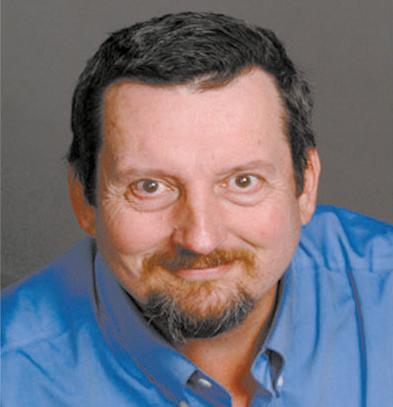
RELATIVITY
TODD WHITCOMBE
neurons while also cleaning up the synaptic clefts. The glial cells also communicate with one another via chemical means.
It is the neurons which really perform the functions we associate with our minds. Part of what makes these cells unique is their structure.
Typically, cells are small and round, such as red blood cells or they are squished together into brick-like arrangements in organs such as the liver or pancreas.
Neurons, in contrast, are highly asymmetric better resembling a tree than a typical round blob.
They have projections covering each end forming a myriad of connections – sort of roots and branches – with a long trunk inbetween called the axon.
They are also very large cells and in the human body, the axon
can stretch to a metre in length. In a blue whale, single neurons have been found over 10 yards long.
Perhaps more importantly, from the perspective of signaling, neurons make connections with other neurons. On average, each neuron talks to 10,000 others and listens to what 10,000 others have to say. While neurons don’t literally talk, they communicate with other cells through synapses so that the whole of our brain is made up of approximately 100 trillion connections. The “ears” of a neuron are called dendrites and extend from the cell body. They accept input from other neurons in a unidirectional fashion. That is, they can only listen to what one other dendrite from a sending neuron is saying.
At the other end of the axon, the dendrites can only speak and only to one receiving neuron. Thus, information flows from one end of a neuron to the other and never the other way around.
This is important in the overall structure of our nervous system. It would be very strange and counter-productive if moving our
finger, for example, caused the thought to appear in our brain.
The conduction of signals is via an electrochemical influx. Specifically, the membrane of a neurons has an electrical potential generated by pumping potassium into the cell and sodium out. The balance between the concentrations of these ions results in a resting potential across the cell’s surface of -89 mV. It doesn’t sound like a lot, as a typical battery is 1,500 mV but, because the cell membrane is so thin, it amounts to a field voltage of around 200,000 V/cm. So what happens when a signal is received? The dendrite is excited and the membrane depolarizes, allowing a flood of sodium into the cell followed by the slower release of potassium out. The resulting potential change triggers the next portion of the membrane to fire which cause the next portion to fire and so on. It is a bit like watching dominoes fall.
But a single neuron firing through a single dendrite isn’t really sufficient to activate a neuron to pass on the message. Multiple dendrites must be stimulated
simultaneous. The signals are ganged together with each signal adding to others.
At the base of the axon, adjacent to the cell body, is a specialized region called the axon hillock. If enough signals are summarized simultaneously they can surmount the hillock producing a ripple down the rest of the axon. Once past the hillock, a different set of channels opens faithfully carrying the full action potential to the end of the axon where each dendrite passes it on to the next neuron in the chain.
Which channels in the receiving neuron or neurons get activated determines the fate of the impulse. Generally speaking, the more receiving dendrites from a single receiving neuron, the better. It is as if you have a whole crowd shouting a single phrase at you from 100 metres away. You are more likely to hear what is being said than if a single individual tries to do the same.
All of this is the basic electrical architecture of the nervous system. More on how it is organized next week.

The Washington Post
If cultural criticism was strictly a numbers game, we would never have heard much about Mad Men, Breaking Bad or The Americans. We wouldn’t know enough about the TV shows that starred Louis C.K., Aziz Ansari or Jeffrey Tambor to merit the outrage that pushed those guys off the grid of acceptability. We might be vaguely aware that there was once a show called Girls or a young woman named Lena Dunham. And David Simon would probably not have a genius grant.
Here’s a symmetry theorem that’s worth a whiteboard full of confounding calculations: what dimension are we living in, one must ask, where some of the most-watched shows (NCIS and its spinoffs on CBS; Dick Wolf’s Chicago oeuvre on NBC; eleventyseven seasons of Grey’s Anatomy on ABC) inspire a relatively small degree of afterthought, interpretation or effusive chatter?
This is what I keep coming back to as Chuck Lorre and Bill Prady’s CBS sitcom The Big Bang Theory comes to its end tonight after 12 impressive seasons (279 episodes), having spent much of its life at or near the top of the Nielsen ratings – which, yes, still matter greatly in the business of broadcast television.
The Big Bang Theory thrived as so many others came and went, making gazillionaires of its producers and lead cast members. It has been a megahit in syndication, almost pervasively so, the preferred programming choice anywhere the television is kept on, whether someone’s watching it or not. Hospital waiting rooms, your aunt’s house, everywhere. At a loud volume, it was the sweet sound of redundance and comfort – the rhythms of its wry jabs and retorts, the palatably odd mix of predictability and cerebral banter. It was the possible warping of time accompanied by audience guffaws; the old sitcom format skirting the edge of a black hole.
What’s on? The Big Bang Theory. Now what’s on? The Big Bang Theory.
Now what’s on? The Big Bang Theory. You think I’m here to dance on its grave, but the joke’s on you. Having submerged myself in

a day’s worth of BBT reruns, up to and including recent episodes in which its main character, the genius theoretical physicist Sheldon Cooper (Jim Parsons) and his equally brainy wife, neurobiologist Amy Farrah Fowler (Mayim Bialik), struggle with decisions that affect their best chance at Nobel Prize glory, I can only sit in slack-jawed respect for everything that made the show work.
To start, there’s the precision of its concept matched with the rigid (some would say confining) simplicity of its format. It’s smart about being dumb about being smart. There’s the attention to detail that turned potentially niche characters – four male physics nerds with geeky pop-culture proclivities who all worked at the California Institute of Technology in Pasadena – into appealingly broad subversions of old, sad stereotypes. There’s the irritatingly catchy theme song, supplied by the dorky Canadian rock band Barenaked Ladies, that boils the origin of all cosmic and earthly existence down to 20 seconds, emblematic of the show’s celebration of science and math, at a time when facts are dangerously dismissed as opinions.
And there was the implicit
The Canadian Press
Women are making some headway towards gender parity in Canadian film and TV production, but a new report says progress isn’t being shared across the board.
Both Indigenous women and women of colour are still “significantly underemployed” in production, the non-profit organization Women in View found in an analysis of 5,000 film and TV contracts issued from 2014 to 2017.
The study looked at women’s share of key production roles – writing, directing and cinematography – on narrative series airing on Canadian network TV and English-language films funded by Telefilm.
Within the years examined, women’s share of those jobs increased by 11 per cent to 28 per cent.
But a much smaller 1.81 per cent of TV and film contracts went to women of colour, while Indigenous women represented a mere 0.69 per cent of those roles in the same period of time.
The study noted that no Indigenous women worked on any of the 24 series studied in 2017.
“Although the numbers are dreadful, they provide us with a baseline and we can work from here to improve them,” said Women in View board chair Tracey Deer in a statement.
The fifth edition of the periodic Women in View on Screen report marks the first time its researchers included data on women of colour and Indigenous women. Other findings showed that when a TV series employs a female showrunner, a position that handles both creative and management responsibilities, it tends to have a more even gender balance.
When a man held the same showrunner position, a TV series would employ 86 per cent men, according to data studied in 2017. Gender balance also varied depending on the region of Canada.
In 2017, half of all Telefilm-funded films were directed by women in Atlantic Canada and Ontario, the report said. Quebec lagged behind other regions with less than 17 per cent of projects directed by women.
Bridging the gender gap in Canada’s film and TV industry has become a frequent conversation in the entertainment community, with numerous organizations making tangible commitments.
Last year, Telefilm Canada acknowledged “a significant” gender gap in the big-budget films it backs and promised to prioritize projects of equal merit that feature female writers, directors and producers. The organization wants to reach gender parity in key film roles by 2020.
In response to Women in View’s 2015 report on gender parity, the CBC announced in mid-2016 that women would make up at least half of all directors on Murdoch Mysteries, Heartland, This Life, Baroness Von Sketch Show and Workin’ Moms. Women in View executive director Jill Golick said Canada’s production community has enough experienced women in key production roles to reach gender parity already.
but never acknowledged understanding that at least one of its characters – Sheldon – could be viewed as coping with a developmental disorder; Asperger’s, one might suggest, if one was reviewing another kind of show where characters are openly diagnosed and described. Over the years, Sheldon’s social awkwardness and off-putting superiority was woven into his friendships and eventual marriage as a matter of mirth, rather than being singled out for maudlin tonal shifts away from comedy.
Sheldon caught on with America because we didn’t necessarily need him explained to us.
When The Big Bang Theory premiered in 2007, pop culture had already flipped the nerd archetype, exalting in high-tech billionaires and philosophical theorists – Bill Gates, Steve Jobs, Stephen Hawking and, soon enough, Mark Zuckerberg.
Working with material that managed to be both intellectual and rote, The Big Bang Theory (especially Parsons, who leaves behind a singularly memorable character) provided paper-thin layers and just enough shading to the evolving idea that no one is ever truly uncool. The show was

anti-bully before being anti-bully became a movement.
Looking back to that first season, before the show became a hit, it’s remarkable how much of it was instantly set in stone – the affirmation of geek obsessions (superheroes, Star Trek, Dungeons & Dragons) – and how much the show had yet to evolve. Sheldon and his roommate Leonard Hofstadter (Johnny Galecki) meet their new neighbor, Penny (Kaley Cuoco), a wannabe actress from Omaha who works at the Cheesecake Factory. She’s blond, sexy; Leonard and Sheldon are captivated and yet intimidated, bumbling.
At first, it felt like The Big Bang Theory would make most of its hay from the old trope that a young American man with a high IQ and gaming habit repels most women.
He’s a stunted man-child deserving only our society’s jokes about living in basements and wasting his life – a dangerous idea that stopped being funny years ago and fomented misogynistic and violent notions in lonely men.
Happily, the show grew away from that. Penny started hanging out with her nerd neighbours and the rest of their pack – Howard Wolowitz (Simon Helberg)
and Rajesh Koothrappali (Kunal Nayyar) – and eventually fell in love with Leonard. Sheldon met Amy and learned to manage his responses to emotion and intimacy, even as the show’s writers necessarily retained his acerbic distance. Howard found Bernadette (Melissa Rauch) and was picked to work on the International Space Station. Raj, once mute in the presence of women, gained confidence and dated around. The message seemed clear and in a way regressive: each of these men could only be solved by adding a woman to the equation – women who “got” them, women who could remind them that people mean more than math. Though it spoke the language of Comic-Con and STEM with a fluency that seemed modern and even hip (for network TV), make no mistake: The Big Bang Theory was resolutely conventional, aimed straight down the middle and hitting a bull’s eye. Of course there have been better shows about incipient nerddom and high-tech awkwardness –HBO’s Silicon Valley, for one. But that show is not constantly airing in airport terminals and blaring away in your in-laws’ living room, is it?






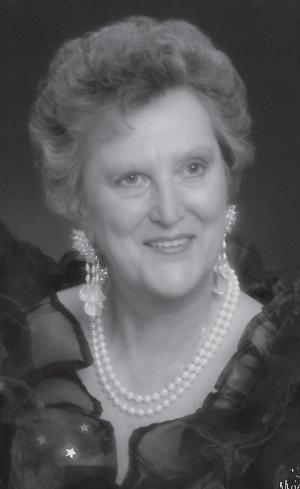
Ann Strong
In Loving Memory of our mother, Ann Strong who passed away May 12, 2019, predeceased by her husband, William Strong. She will be remembered by daughter Betty (Tom) Volk, son Bob (Billie) Strong, granddaughters Dawn Guzak & family, Amber Volk & family, also family and friends in Newfoundland and Prince George. Internment to follow in Chase, BC.

WITHOFA2OR3 LedcorConstruction Limitedcurrentlyhas openingsinthePrince Georgeareafor CarpentersandLabourers withOFA2or3,safety experiencewouldalsobe anasset.Localapplicants willbegivenpreference. Pleasesendresumesto heather.taron@ledcor.com Wethankallapplicantsin advance,onlythoseshort listedwillbecontacted.



Forever in our hearts
Celebrating the life of Irvina (Vi) Corallie Forden (Butler) Nov. 8, 1940Feb. 22, 2019
Please join us Saturday May 18th at 1:00 p.m. at the Spruce Capital Senior’s Centre, 3701 Rainbow Dr. Prince George, BC.
Left with loving memories are her husband Charles, her children: Joe (Lee) McAuley, Teri (Brian) Helgeson, stepdaughter, Velvet (Rick) Speiss, her very special nephew, Rod Butler (Marg), her grandchildren: Michael Helgeson, Ryan Helgeson (Sophia), great grandson, Tyson Helgeson, step grandchildren: Doug (Lisa), Kelsey, Jake, Amanda (Wyatt), Heather, Derek and several great grandchildren, her sister and best friend Thelma White (Glen), brothers John Butler (Trish), Bud Butler (Betty), as well as her many sister and brothers-in-law, cousins, nieces, nephews and friends.
She will be forever missed
Nancy “Carole” Stooksberry March 20, 1939 May 13, 2019
Our sorrow runs deep as we announce the passing of Carole, at the age of 80 years.

She was a loving mother, mother-in-law, grandmother, great grandmother, aunt and, until just a few months ago, a wife to her beloved “Rusty” of 54 years. If you were one of her friends, she was your staunchest supporter.
Carole was a fiercely independent soul by nature. She relished a good suspense novel, complex crossword puzzles, art, gardening, “Jeopardy”, and was obsessed with watching the sport of curling (no interruptions tolerated!).
Carole had a flair for decor, and could create the most amazing displays, from wreaths to extraordinary Christmas trees; and her gardens were a paradise. Her censure was swift and direct; her support was absolute.
Walk peacefully, sweetheart, among your prized marigolds and stargazer lilies, knowing you were so very cherished.
~Your loving family~ Celebration of Life to be announced at a later date.

Established Franchise Tax Preparation BusinessMackenzieservicing and McLeod Lake area for over 30 years. Gross Revenues of $85,000 to $90,000 Annually and Potential to expand revenues in a growing economy. Transition support available for the right buyer. Serious Inquires Only Office (250)997-9003 Home (250)997-5538 Cell
SHIPPER/RECEIVER-BGESERVICE&SUPPLY BGEisseekingadetail-orientedpersontoload/ unloadshipments,preporders,andkeepthe warehouseorganized.Forkliftexperiencepreferred. Toapply,sendyourresumeto












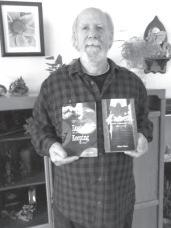

































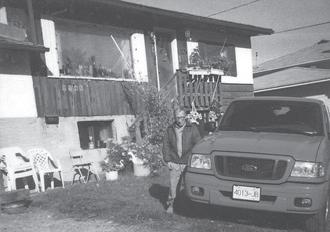

















These are indicative wholesale rates for foreign currency provided by the Bank of Canada on Wednesday. Quotations in Canadian funds.
The Associated Press
The U.S.-China trade blowup was a long time coming.
And it won’t be easily resolved, not even if U.S. and Chinese negotiators reach a truce in the next few weeks that reassures jittery financial markets.
Tensions between the world’s two biggest economies intensified over the last week. U.S. President Donald Trump’s administration more than doubled tariffs on $200 billion in Chinese imports and spelled out plans to target the $300 billion worth that aren’t already facing 25 per cent taxes. The escalation covers everything from sneakers to toasters to billiard balls.
The Chinese have punched back by upping tariffs on $60 billion in U.S. imports.
Eleven rounds of negotiations have failed to settle a dispute over Beijing’s aggressive push to challenge U.S. technological dominance – a campaign, the U.S. alleges, that includes stealing technology and forcing foreign companies to hand over trade secrets.
Canada’s main stock index closed higher Wednesday along with U.S. markets, led by gains in the tech sector. The market gains came as the hit from heightened trade tensions between the U.S. and China somewhat eased, said Colin Cieszynski, chief market strategist at SIA Wealth Management. “Overall it seems as though some of the fear that really gripped the market earlier in the week is still kind of falling off.” Markets were riled after the U.S. said Friday it would increase tariffs on a wide range of Chinese goods, with China promising retaliation. The threat of those tariffs coming into place, and the wider impacts of trade tensions, still remain, said Cieszynski.
“I wouldn’t say fears are necessarily easing, I would say more that the initial wave of shock has kind of died down. I do think that with good reason, that fears are probably going to be more elevated going forward.”
The S&P/TSX composite index ended up 33.61 points 16,318.14, led by a 1.62 per cent gain in the information technology index. The health care index rose 1.13 per cent, while the financial, telecom and real estate indexes slipped somewhat. In New York, the Dow Jones industrial average closed up 115.97 points at 25,648.02. The S&P 500 index ended up 16.55 points at 2,850.96, while the Nasdaq composite was up 87.65 points at 7,822.15. The Canadian dollar averaged 74.34 cents US, compared with an average of 74.24 cents US on Tuesday, after Statistics Canada said the consumer price index posted a year-over-year increase of two per cent last month. The latest report, in line with the Bank of Canada’s two per cent inflation target, means no big changes are likely for its trend-setting interest rate, said Cieszynski.
“When I look at the inflation numbers, and then I look at last week’s Canadian jobs report, it says to me that probably it just all adds up to keeping the Bank of Canada sitting in neutral for quite a long time to come.”
The June crude contract closed up 24 cents at US$62.02 per barrel and the June natural gas contract was down six cents at US$2.60 per mmBTU.
The June gold contract was up US$1.50 at US$1,297.80 an ounce and the July copper contract was up two cents at US$2.74 a pound.

“The United States has legitimate grounds to be upset with the Chinese,” said Mark Zandi, chief economist at Moody’s Analytics.
“This has been building for almost 20 years.”
It wasn’t supposed to be this way. When China joined the World Trade Organization in 2001, optimists expected China to open its economy. And maybe the Chinese Communist Party would allow more political freedom as the country increased contact with the world’s industrialized democracies.
But the results have been disappointing.
China has used its WTO membership to flood other countries with exports, while limiting foreign access to its own market.
“Their vision is in a lot of ways zero sum,” said Blaine Johnson, a policy analyst who specializes in Asia at the liberal Center for American Progress.
The result is a badly lopsided trading relationship: The U.S. trade deficit with China last year hit a record $379 billion.
“China has effectively used the multilateral trading system to its own advantage, enjoying the benefits of those rules of engagement
while not always following those rules in spirit,” said Eswar Prasad, a Cornell University economist and former head of the China division at the International Monetary Fund.
Critics now say the Genevabased WTO, which sets trade rules and mediates disputes, was ill-equipped to handle China’s unorthodox blend of capitalism and state control. In the Chinese system, it is tough to tell whether a company is seeking profits in the conventional way or is acting with the support and on behalf of the government to achieve China’s strategic goals. The U.S., for example, says that the telecommunications equipment supplied by China’s Huawei can be used to spy on foreign countries.
“China’s economy is fundamentally different – even unique,”
Mark Wu of Harvard Law School wrote in an influential 2016 paper.
“The WTO rules, as written, are not fully equipped to handle the range of economic problems associated with China’s rise.”
Frictions have increased since Xi Jinping became the Chinese leader in 2012. Beijing in 2015 unveiled an ambitious program, Made
in China 2025, to turn Chinese companies into world leaders in advanced fields like robotics and artificial intelligence.
But the U.S. says China is trying to meet its aspirations by stealing trade secrets, coercing technology transfers, subsidizing its own firms and burying in red tape foreign companies that want to compete in the Chinese market. Last year, the U.S. began imposing tariffs to pressure China to drop the aggressive tactics.
Talks to resolve the dispute have foundered in part on America’s insistence that any deal contain provisions that will force China to keep its commitments.
“China is unlikely to give in to the American demands,” economist Sung Won Sohn of Loyola Marymount University wrote this week. “To China, it is more than a trade issue: they see America bullying a new emerging economic and military rival. It reminds China of the humiliation the country suffered in the 19th century when the Western powers imposed unfair treaties on China.”
Still, many analysts expect the two countries to find a way back from the brink – at least in the
The Canadian Press
Canadian drug makers enriched themselves at the expense of vulnerable patients by illegally and deceptively promoting highly-addictive opioids that have killed thousands in recent years, a proposed class action filed Wednesday asserts.
The untested statement of claim filed in Ontario Superior Court seeks more than $1.1 billion in damages from almost two dozen companies, including some of the biggest pharmaceutical names in the country such as Apotex, Bristol-Myers Squibb, Johnson and Johnson and the Jean Coutu Group. The suit, filed on behalf of patients who became addicted to prescribed opioids, also seeks a declaration that the companies were negligent in how they researched, developed and marketed opioids starting in the 1990s.
“The defendants knew that anyone who injected opioids would be at significant risk of becoming addicted,” the claim asserts.
“As such, the defendants breached statutory and common law duties to the plaintiff and class who became addicted to opioids for which the defendants owe damages.”
The proposed representative plaintiff is Darryl Gebien, of Toronto, a doctor pre-
scribed the opioid Percocet for a ligament injury in his thumb. Gebien became addicted, the claim asserts.
“Dr. Gebien’s addiction had a significant and lasting impact on his life,” the claim states. “Dr. Gebien lost his licence to practise medicine. He lost his job. He was incarcerated. He lost custody of his children.”
Opioids are a powerful narcotic that can induce an addictive, euphoric high that requires higher doses over time to maintain effectiveness and avoid symptoms of withdrawal. The drugs were not widely prescribed for pain treatment because they were considered too addictive but that approach changed in the mid-1990s.
“The defendants promoted opioids as safe, effective and appropriate for long-term use for routine pain conditions,” the claim states. “The aggressive marketing efforts of the defendants were incredibly successful.”
No statements of defence have been filed and there was no immediate comment from any of the drug companies.
The abuse of opioids has become a public health crisis, with fatal overdoses becoming epidemic across North America. They have killed more than 20,000 Canadians over the past 20 years and about 4,000 new deaths occur annually in Canada.

near term. Each has an incentive to end the dispute. The Chinese economy is decelerating, and the trade war with the United States is worrying China’s consumers and businesses.
In the United States, the dispute jeopardizes a stock market rally that Trump touts as a vote of confidence in his economic stewardship.
The two countries are expected to resume talks that broke off Friday but haven’t scheduled anything yet.
Trump has said that he expects to meet Xi in late June at the G-20 summit in Osaka, Japan.
Cheng Li, director of the China Center at the Brookings Institution, admits there’s no way the U.S. and China can resolve all the issues that divide them.
But he says continued economic co-operation between the two countries is vital: it gives them common interests and helps prevent their rivalry from escalating into political and perhaps even military conflict.
“Despite all the tensions, no American soldier has died in (East Asia) since the Vietnam War,” Li said. “That’s a great achievement.”

Karla L. MILLER Special To The Washington Post
Q: I’m a college-educated 30-year-old manager running the most profitable department of our company, always professionally dressed and wellmannered, but I can’t seem to avoid being called “girl” at work. If I work off-site, the team there will ask if I’m “the new girl.” It’s not uncommon for the male owner to say, “Girls, have a good sales day” or for the female HR director to ask, “You girls have a nice weekend?” If I try to play it off with good-natured humor (“I’m a grown-up now, but yes, I’m excited to be here!”) or more direct responses (saying “I’m not a ‘girl’ “ while making direct eye contact, then resuming normal conversation), I get cold-shouldered or worse. How do I drag my company into 2019 without compromising my job?
A: Whether it’s referring to adult female colleagues as “girls,” addressing an adult black male colleague as “boy,” or asking a female law partner to serve cake to junior male colleagues, microaggressions are hard to call out for several reasons: they’re less overt than slurs or groping, they’re often unconscious, and people may question whether any harm was actually done. If you speak up, you’re accused of overreacting and policing language. But over time, those tiny cuts accumulate and drain away your dignity and confidence – so ignoring them isn’t a viable option, either.
So how do you safely “drag (your) company into 2019?” You can’t. There’s no magical incantation to update flawed mind-sets without blowback.
Once you’ve freed yourself of that expectation, what you can do is make your boundaries clear until


you decide it’s time to move on to a workplace that respects you as a professional. In interpersonal encounters, there’s always the tit-for-tat swipe: “yes, can one of you boys show me around?” But that assumes you’re dealing with people who have the self-awareness to laugh and learn. If you’re not confident in that assumption, try answering rude questions as though they were framed correctly: “I’m (name), I’m the new (title),” with a firm, friendly handshake. (Subtext: I’m not a “girl.” I’m a department head. With a name.)
Whether your HR director has succumbed to the prevailing mind-set or is just awkwardly trying to be sisterly, she’s reinforcing a gender hierarchy that undermines the policies she’s supposed to endorse – and she’s fooling herself if she thinks her position makes her an exception to that hierarchy. Try enlisting her aid: “When (CEO) and off-site managers refer to us as ‘girls,’ it implies they don’t see us as professionals. I’d like to avoid using that term, even just among ourselves.”
If you have a connection with the CEO to broach these concerns, emphasize the impact on the bottom line; share data on how work environment affects productivity, and how even unintentional microaggressions damage morale and performance.
When it’s time to move on, use the opportunity to make a difference to those who come after you, says Annie Liao Jones, founder and CEO of Austin advertising agency Rock Candy Media. When Jones left her first job, she politely but frankly informed the CEO of her concerns about a manager who kept nudging Jones, a top seller, into “nurturing” roles: “when I left I said, ‘You’re never going to succeed with a sales manager that treats women that way... It’s not good for your bottom line.’ “
Two years later, the CEO let her know he’d taken her words to heart, hiring an HR consultant and replacing the former manager. So even if you’re not going to be around to reap the benefits, says Jones, “you never know when you can change someone’s mind just by planting the seed.”


The Washington Post
Chief executives faced a year of reckoning in 2018 – but not for the reasons that have traditionally led to forced departures from the corner office. Last year, as boards clamped down on misconduct in the #MeToo era and placed greater scrutiny on executive behavior, more CEOs were pushed out for ethical lapses than for poor financial performance or struggles with their board – a first for the study by Strategy&, the strategy consulting arm of PwC.
Thirty-nine per cent of the 89 forced CEO departures in 2018 were due to ethical misconduct, which the study defines as the removal of a CEO following a scandal or improper conduct; examples include fraud, bribery, insider trading, environmental disasters, inflated resumes or sexual indiscretions. Meanwhile, 35 per cent of ousters in 2018 were a result of poor financial performance and just 13 per cent were because of conflicts at the board level or with activist investors that weren’t about financial performance but led to the CEO’s ouster.
Compare that to a decade earlier, during the financial crisis in 2008, when 52 per cent of forced exits were tied to financial performance, 35 per cent to board conflicts and just 10 per cent to misconduct. Even in a less disastrous financial year – say 2013, as the economy was recovering but before the #MeToo movement began – nearly 40 per cent of terminations were the result of performance, 30 per cent the result of board struggles and less than a quarter happened because of ethical lapses.
For boards of directors, said Martha Turner, a partner with Strategy&, “there’s a new call for transparency and accountability,

especially with issues regarding the #MeToo movement and other indiscretions for which there is increasingly zero tolerance,” she said. There’s more “reluctance for the board to give CEOs the benefit of the doubt.”
The year was filled with marquee names who stepped aside amid investigations into their behavior. In September, for instance, CBS’s powerful longtime chief executive, Leslie Moonves, resigned following sexual-assault allegations. In December, the company said Moonves would not receive his severance. (At the time, Moonves’ lawyer said in a statement that the board’s decision was “without merit” and that Moonves “vehemently denies any nonconsensual sexual relations and cooperated extensively and fully with investigators.”)
The year also saw the departures of CEOs from Lululemon, WPP, Intel and Barnes & Noble, to name a few – often amid allegations about misconduct or violations of company policies that ranged from sexual harassment to consensual relationships with employees. The rise in ousters for ethical misconduct comes in a year when a strong economy meant strong numbers for many CEOs, and it may seem logical that the proportion of terminations from financial figures was slightly lower. But 2018 results also follow a 12-year trend of more CEOs getting the axe for their misconduct as boards have been expected to play a greater oversight role. (PwC has examined the reasons for forced departures since 2007, but has run the analysis on overall CEO turnover since 2000.)
“Boards feel they have to hold their CEOs accountable to the code of conduct in the same way they would with employees,” said Bill George, a senior fellow at Harvard Business School and former CEO of Medtronic who recently retired from the Goldman Sachs board. “There’s a strong feeling from boards they have to do it.”
Some of that pressure, George said, is now coming from employees, who are getting their voices heard more often by the board.
“That’s a very important factor today that didn’t exist 10 years ago,” George said. “I don’t think the conduct has changed, but the standards have changed.”
The PwC study also found that CEO turnover in general – forced changes as well as planned successions and handoffs due to mergers and acquisitions – hit a record high in 2018, as 17.5 per cent of the 2,500 largest global public companies had a change at the top.
That number swelled not only as the number of forced departures grew, but as planned successions did, too.





THURSDAY, MAY 16, 2019
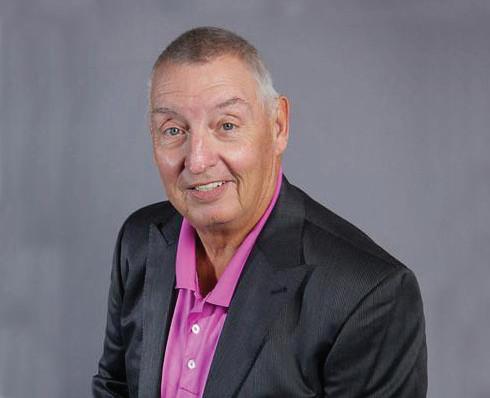

Stitching together a love of clothes, costumes, and do-it-yourself skills is what got Chantal Short all the way into the professional theatre ranks.
It didn’t start out that way, though, and she is now showing the city’s young and the aspiring (of any age) all the needles and threads of the sewing profession.
When Short left Prince George to pursue her stage dreams, she did so despite a fear of the live spotlight. She got her degree from the lauded theatre school at the University of Victoria but she was on a different exit path than the one on which she entered. Acting was no longer her goal, but she still had a love for the world of stages and performances.
“I answered a post from the Slamming Door Artist Collective looking for a volunteer to assist their costume designer,” Short said. “I thought it would be a cool way to meet people and it was, but it really opened my eyes to this other side of theatre.”
That would be the hidden side, in the darkness of the wings, the side audiences only experience indirectly through the costumes and other effects built for that performance.
She is now a veteran of theatrical costume-making, for indie drama companies all the way up to a stint in the Cirque du Soleil costume department.
Short was, in the past couple of seasons, the resident costume designer for Theatre NorthWest and she will be leading a series of sewing workshops this summer to pass on her knowledge to people here interested in the fibre arts.
“It is amazing to be back in Prince George working in theatre,” she said. “I don’t know that I ever realized, when I was growing up here, that this could actually be a job, that I could make money at it, so to be able to come to P.G. and do that work professionally is super awesome and if there are kids in the sewing camps this summer who dream about being a costume designer or going into the fashion industry, then I can help that.”
These camps are not just for theatri cal costumes, though. It is to introduce


Mask for a Douglas College produc-
or deepen a life-skill that stands anyone in better stead. She grew up in a bluecollar environment with a family full of “tradies” as she called them. A mechanic being able to patch up the knees of their overalls is just as important. So is saving money on clothes by learning how to make your own.
“I find as a costume designer, people are really intimidated by sewing,” she said. “They don’t think they can figure out the sewing machine and that stops a lot of people from trying, and there was gender pressure too that I hope, I believe, isn’t there as much anymore, that was always dumb, so everyone should come and do this and you’ll learn things you’ll enjoy, it’ll help you and interest you even if you’re just remotely curious.”
She remembers the first professional play she ever saw at TNW. It was The Miracle Worker in 2001.
She also remembers the surreal first time she worked on the TNW costumes, last being It’s A Wonderful Life: The Radio Play in 2017.

She still feels pangs of surprise that her D.P. Todd Secondary School Drama


started her theatrical career on stage in high school productions in Prince George but moved backstage to
costume designer. Besides designing the look of Elvis Presley, Jerry Lee Lewis and the
characters in Theatre Northwest’s recent production of Million Dollar Quartet and a
tion of The Foreigner at Chemainus Theatre, she built a mask for a
College production of Antigone.



















you!


















Spirit Day 2019 was successful because of you! $50,115 was raised on May 2 through the generosity of our donors, sponsors, fundraising initiatives, and volunteers in support of funding of a CALMING ROOM at UHNBC. Donations are still coming in and are still being graciously accepted!!!


















Thank you to all individuals, physicians, healthcare specialists, and advocates that bravely shared their experiences in support of Mental Health and Wellness.






















The journey has just begun… Thank you to everyone that was involved on Spirit Day to help improve mental health and wellness assessment and treatment in the North! Mental Health truly touches us all, and we greatly appreciate the fantastic community support! 250-565-2515 | www.spiritofthenorth.ca




George. She hopes her teacher, Linda Riches, feels some of the responsibility for inspiring her.





“Ms. Riches was the best, super sup portive, helped those of us with a love to turn it into something,” Short said. “She was fine with someone saying they






Short said. “You learn about felting, manipulating weird materials like plastics, I’ve made masks by melting down garbage bags with a heat gun. I’ve watched a lot of cosplay tutorials. Those industries






She wants to point the way from the sewing table off into the world of theatre, or fashion, or artisan creation, or whatever someone may feel inclined to do with the skills. She is especially hopeful that the people who take the course will feel more strongly about getting involved in creative activities, no matter what that


costume personnel for awhile.
In the meantime, Short is in Vancouver where she is helping her first company out again, doing costume design for Slamming Door Artist Collective’s production of The Sea (co-starring Melissa Oei, who has been to Prince George twice in recent years to act in Miracle Theatre productions).
Short is also taking on another important sewing project, her friend’s wedding dress.
She will be back to lead the summer sewing camps. For information on how to sign up in the age or experience category best for you, go to the TNW website and follow the links to the workshops. Kids as young as eight are invited to learn, and there are options with no maximum age. There are certainly no maximum uses for these creative skills.
“It’s not just about sewing,”
“P.G. gets a rough rap, but they support their arts,” Short confirmed. “When I tell my stories about how things are in my hometown, people from other places all kind of wonder how they could make that happen where they live. There is a bit of amazement out there at how people in Prince George step up for people doing artistic projects. We really do it well in P.G., and how important and amazing that is. It’s pretty rad.”






























Those who advocate for human rights are often frustrated when the crimes committed by those in power result in no apparent consequence. We need to remember, however, that truth never disappears.
Roughly 100 years ago, Dr. Peter Bryce was commissioned by the Department of Indian Affairs to assess the health conditions at residential schools across the country. What he discovered was shocking. These institutions were breeding grounds for tuberculosis. Overall, the death rate was 24 per cent. In some places, it was as high as 75 per cent. Clearly, this was vital information and the Canadian government would take action to preserve the lives of children.
Bryce’s report to Deputy Superintendent Duncan Campbell-Scott was ignored.
His department was not willing to invest the resources needed to make the schools healthier. Perhaps CampbellScott was under fiscal pressure from his government but he also made the following disturbing statement: “I want to get rid of the Indian problem.”
In the end, Dr. Bryce was coerced into retirement. He did publish his findings in 1922 in a book called A National Crime, but it was largely ignored by the Canadian public. He died 10 years later, never knowing the significance of his work.
In the 1990s, Bryce’s reports resurfaced and became a groundwork piece in cases brought against the federal government, resulting in the 2008 apology by Prime Minister Stephen Harper and the Truth and Reconciliation Report of 2015. Until then, even Bryce’s own family members had no idea of the legacy the principled doctor had left behind.
More recently, human rights activists, church groups and other international watchdogs have noted American involvement in crimes against humanity and even what could arguably be called genocide, in Central America. This was rarely even reported in the mainstream media, and few held hope that the U.S. government or any individual working for the state would ever be held accountable. Then came the Congressional elections of 2018 and Representative Ilhan Omar of Minnesota. She is one of the first two Muslim women, the first Somali-American and the first African-born naturalized citizen ever to be elected. Given this background, one can understand why she has become a strong advocate for social justice.
In a recent House of Representatives


Foreign Affairs Subcommittee meeting, she took on Elliott Abrams, the American special envoy for Venezuela and longserving American diplomat, about his involvement in alleged war crimes in Latin America since the Reagan era. Omar cited numerous reports of Americanbacked atrocities in El Salvador, Nicaragua and Guatemala.
Though this was by no means a court of law and it is unlikely Abrams will ever be put on trial, the fact that this is being openly and publicly discussed by
American lawmakers is a clear indication that the truth is coming to the surface. It will not be long until the American population begins to see the link between the throngs of people fleeing to their southern border and covert U.S. military operations in Latin America. When first learning about genocide and other crimes against humanity, my students are often horrified by what happened in the past. In response, I ask them: “how will history judge us 50 or 100 years from now?”
Minnesota Rep. Ilhan Omar sits with fellow Democrats on the House Education and Labor Committee during a bill markup, on Capitol Hill in Washington on March 6.
In other words, what will be our legacy? Will we be Peter Bryce, Duncan Campbell-Scott, Elliott Abrams, Ilhan Omar and individuals who seek to change the world or people who choose to turn a blind eye to injustice?
The victors may control the mainstream media and write history books but they do not determine what actually happened. The truth always comes out and truth always liberates. When we look honestly at history, we give meaning to the sacrifices of our ancestors. We are thus inspired to improve the present and build a better future for our descendants.
Gerry Chidiac is a champion for social enlightenment, inspiring others to find their greatness in making the world a better place. For more of his writings, go to www.gerrychidiac.com

Thurs, May 16
Opening Day
Thurs, May 16
Opening Day
Mon, May 20
Thurs, May 16
Sun, September 1
Day & Pie Eating Contest
16th Annual Williams Creek
Sports Day & Pie Eating Contest
Sun, September 1
Thurs, May 16
Opening Day
Mon, May 20
Victoria Day Celebrations
vaguely remember getting what I think were my smallpox and polio vaccines. The details don’t matter so much as the message I got from my mom.
Sat, June 15
Theatre Royal Gala & Barkerville Heritage Trust AGM
It was a big day. On the way, my mom explained that I was getting vaccinated and it should protect me from polio, which had crippled one of her friends. My mom eagerly marched my four-yearold self into our tiny rural school and the deed was done.
Mon, July 1
Dominion Day Celebrations
The current measles outbreak is sad, unfortunate and was likely mostly avoidable. The public policy health perspective seems to be “if only there weren’t so many anti-vaxxers allowed to spread disinformation on facebook and Instagram we wouldn’t have this problem.”
Sat, July 20 6th Annual Indigenous Celebrations
Fri - Mon, August 2 - 5 16th Annual Artswells Festival
Sat, August 17
This elitist perspective is a lazy way to deal with the loss of public trust. Professionals can and should do better.
Chinese Mid-Autumn Moon Festival
Public health initiatives require public buy-in, because they fail without the trust required for success. Therefore, public opinion is the one that really matters, more than the actual science. Yes, public “opinion” is the one that matters, because the public has to show up.
From my layperson’s eye view, part of the fault lies in the promotion of the newer vaccines seeking to eradicate the less damaging illnesses. I think specifically of the flu vaccines.
Each year, we are encouraged to seek out the newest iteration of the flu vaccine so that we escape serious harm and serious harm to the Canadian economy. Perhaps it doesn’t really fly when many of us get a day off work with pay when sick, or we are happy to just get a mini-vacation because of our fast pace of life. We don’t
Sun, September 1 16th Annual Williams Creek Sports Day & Pie Eating Contest

Sat - Sun, September 7 - 8 9th Annual Cowboy & Drover Jubilee
TRUDY KLASSEN
Fri - Sun, September 27 - 29 6th Annual Steampunk Murder Mystery Sun, September 29 Last Day of Main Season
make decisions based on what it will do to the Canadian economy. We make personal cost-benefit decisions based on what we know or care about.
Sat - Sun, October 26 - 27 Ghostly Hallowe’en
Another argument is to prevent the deaths of the sick and frail. People do grasp the irony of how we treat them: we insist that the sick and frail be “protected” from the hazard of the flu by posting signs to warn visitors to stay away if they don’t have the vaccine, only to “encourage” them to suicide by offering medical assistance in dying.
Sat - Mon, December 14 - 16 Old-Fashioned Victorian Christmas
To top it all off, the efficacy rate of the flu vaccine, unlike our older, traditional vaccines, has varied widely between 10 and 60 or so per cent. These poor efficacy rates transfer to all vaccines in the public opinion.
Over the last number of years, when young parents heard the word vaccine through the magic of advertising, they thought of the flu vaccine, because that’s the one being advertised. They made a cost-benefit analysis and the low efficacy rates just don’t make a convincing case. They don’t remember measles, pertussis, diphtheria, tuberculosis, or polio.
The general public’s trust in vaccinations has been lost, partly due to the flu vaccines. I just hope we don’t have to endure a serious epidemic in order to rebuild that trust.
Victoria Day Celebrations
Opening Day
Mon, May 20
Victoria Day Celebrations
Sat, June 15
Mon, May 20
Theatre Royal Gala
Victoria Day Celebrations
Sat, June 15
Sat - Sun, September 7 - 8 9th Annual
16th Annual Williams Creek
Sports Day & Pie Eating Contest
Thurs, May 16 Opening Day
Sun, September 16th Annual Williams
Sports Day & Pie Eating
Theatre Royal Gala & Barkerville Heritage Trust AGM
Sat, June 15
Mon, July 1
Theatre Royal Gala & Barkerville Heritage Trust AGM
Mon, July 1
Dominion Day Celebrations
July 20
Mon, July 1
Sat, July 20
Dominion Day Celebrations
6th Annual Indigenous Celebrations
Sat, July 20
6th Annual Indigenous Celebrations
Fri - Mon, August 2 - 5
16th Annual Artswells Festival
Fri - Mon, August 2 - 5
August 17
16th Annual Artswells Festival
Sat, August 17
Chinese Mid-Autumn Moon Festival
Sat, August 17
Chinese Mid-Autumn Moon Festival
Sat - Sun, September 7 - 8 9th Annual Cowboy & Drover Jubilee
Cowboy & Drover Jubilee
Sat - Sun, September 7 - 8 9th Annual
Fri - Sun, September 27 - 29 6th Annual Steampunk Murder Mystery
Cowboy & Drover Jubilee
Fri - Sun, September 27 - 29 6th Annual Steampunk Murder Mystery
Mon, May 20
Victoria Day Celebrations
Sat, June 15
Sat - Sun, Septemb
Cowboy & Drov
Sun, September 29
Fri - Sun, September 27 - 29 6th Annual
Theatre Royal Gala & Barkerville Heritage Trust AGM
Fri - Sun, Septembe
Steampunk Murder Mystery
Last Day of Main Season
Sun, September 29
Last Day of Main Season
Sun, September 29
Sat - Sun, October 26 - 27
Last Day of Main Season
Ghostly Hallowe’en
Sat - Sun, October 26 - 27 Ghostly Hallowe’en Sat - Mon, December 14 - 16
Sat - Sun, October 26 - 27
Old-Fashioned Victorian Christmas
Ghostly Hallowe’en
Sat - Mon, December 14 - 16
Old-Fashioned Victorian Christmas
Sat - Mon, December 14 - 16
Mon, July 1
Dominion Day Celebrations
Sat, July 20
6th Annual Indigenous Celebrations
Steampunk Murder
Sun, September
Last Day of M
Sat - Sun, October
Old-Fashioned Victorian Christmas
we guarantee an available campsite or your next stay is free
we guarantee an available campsite or your next stay is free
we guarantee an available campsite or your next stay is free
We have 99 reservable campsites and 59 first come first serve campsites. If we don’t have a site available for you, we’ll provide you a voucher for two free nights of camping at a later date.
We have 99 reservable campsites and 59 first come first serve campsites. If we don’t have a site available for you, we’ll provide you a voucher for two free nights of camping at a later date.
Excludes June 29 & 30 and Aug 3 & 4
We have 99 reservable campsites and 59 first come first serve campsites. If we don’t have a site available for you, we’ll provide you a voucher for two free nights of camping at a later date.
Excludes June 29 & 30 and Aug 3 & 4
Excludes June 29 & 30 and Aug 3 & 4
97/16 STAFF
Fri - Mon, August 2 - 5 16th Annual Artswells Festival
A free educational series will help Prince George families and caregivers living with the impact of a diagnosis of dementia.
Sat, August 17
Chinese Mid-Autumn Moon Festival
Shaping the Journey: living with dementia will be presented by the non-profit Alzheimer Society of B.C. on four Tuesdays beginning on June 4.
“Participants will learn strategies to live with changes and maximize quality of life,” said Laurie De Croos, one of the Society’s support and education coordinators.
“They’ll also review information needed to plan for the future.”
As an additional benefit, participants will meet others going through similar experiences.
Ghostly
understanding of what you and your family members are faced with, giving you the skills and confidence to maintain quality of life, both now and in the future,” said Sandra Meehan, another regional support and education coordinator. “It helps families build the knowledge, skills and confidence to live well with dementia.”
Sat - Mon, December
Old-Fashioned Victorian
“Educating yourself allows you to gain an
we guarantee an available campsite or your next stay is fre Excludes June 29 & 30 and
Shaping the Journey is designed specifically for people experiencing the early symptoms of Alzheimer’s disease or other dementias. It is also intended for care partners, family members, or friends. It runs on June 4 through 25 from 1 to 4 p.m. at the Alzheimer Resource Centre, 302 – 1811 Victoria Street. Pre-registration is required by contacting the regional Alzheimer Resource Centre at 250-564-7533 or info. princegeorge@alzheimerbc.org.
We have 99 reservable campsites and 59 first come first campsites. If we don’t have a site available for you, we’ll pr you a voucher for two free nights of camping at a later

MEGAN KUKLIS
The first TV I remember us having had a knob to turn the channel, to a maximum of thirteen channels of which we only had reception for one and a half. The TV was heavy and if we moved furniture around, only my dad could pick it up and carry it. Every once in a while, when we were younger, we would be able to rent a VCR player and my dad would turn the air blue while attempting to set it up so we could watch a movie at home. We got our first home computer when I was twelve years old. It was a creamy grey colour and likely a hand-me-down from someone in the family. It took approximately three hours to load. When we got dial up internet a few years later, we had to share the phone line with the house line so we could only be on the internet if we were sure we didn’t need the phone.
I remember “being on the internet” and sitting in front of the monitor wondering what a person “does” on the internet. I think I turned it off and went and read a book which was much more straightforward.
Later in my teen years, I did play some computer games, most;u some version of Tetris, Myst, King’s Quest or Wolfenstein. The graphics were terrible in retrospect and although I no long game except for the occasional Candy Crush, I know that the world of gaming has exploded and that CGI has come a long way since Wolfenstein.
This is why it absolutely blows my mind that the most popular game in our house is a pixelated, retro-looking, block-smashing game with a hero named Steve. He has a parrot.
People justify kids playing Minecraft because “it’s creative” and “you build worlds.” etc. Have you ever watched a kid play Minecraft on an iPad? It’s a lot of hunched-over the screen, finger-tapping, block breaking ridiculousness with the least interesting-looking characters in all of the gaming world.

Except for the parrots and the chickens – at least, they are pretty cute. How creative is a child being sitting there tapping their finger?
My son loves Minecraft. He takes books out of the library and learns how to make portals and craft things together and defeat the bad guys. I hear a lot about the worlds he is going to build and about the elements you need to build certain things and about enderman, zombies, monsters, witches, skeletons, wither skeletons (“they’re different than regular skeletons because they have swords rather than bow and arrows”), blazes (“they shoot
gases and are killed by water”), and ender dragons, creepers, pigmen, spiders, villagers and assorted farm creatures (there are llamas?).
I asked my son why he likes it so much and he said that you can create stuff and make creatures and survive and make cool things. He prefers creative verses survival mode because you can’t get killed by the creatures.
He also saved up his allowance money to download Minecraft Storymode, which is a digital throwback to Choose Your Own Adventure books. The graphics are deliberately terrible and to watch it, the
game is a pixelated blur.
Perhaps the poorly done graphics allow kids to use their imagination more effectively or maybe the game designers are lazy and you have more options in the game if you keep the graphics simple. I do not have the answers.
What I do know is that my son is really excited about it and I will continue to ask questions about the games he is playing and try to monitor the screen time as much as possible because it is also important to go outside and play.
I think Steve and his parrot would agree.
The provincial government’s allparty Select Standing Committee on Children and Youth will be holding a public hearing in Prince George to receive input on how best to treat children and youth with neuro-diverse special needs. It will be held on Wed., May 22 at the Civic Centre, Room 204-206, from 3:30 to 7:30 p.m.
Registration is available by calling the Parliamentary Committees Office at 250-356-2933 or 1-877-428-8337 (toll-free in B.C.) or on the committee’s website: www.leg.bc.ca/cmt/cay.
The committee also welcomes written comments, which can be submitted via its website. The consultation continues until 5 p.m. on Fri., June 7.
The committee will make recommendations to the legislative assembly in a report, which is expected to be released in the early fall.


***
The line dancing group at the Elder Citizens Recreation Centre, 1692 Tenth Ave. will be holding their giant annual garage, crafts, books and bake sale on Saturday from 9 a.m. to 2 p.m. with all proceeds going to centre operations. Hot food and snacks will be available at the concession stand. Donations to the garage sale will be gratefully accepted on Friday. If you have any questions, phone Lisa at 250-561-9381.
***
ECRA’s annual spring luncheon and strawberry tea is being hosted once again by the canasta card players with all proceeds going directly to centre operations. The event will be held Saturday, May 25 from 11 a.m. to 2 p.m. at 1692 Tenth Ave. Come out and enjoy a generous slice of angel food cake covered with strawberries and topped off with freshly made whipped cream. This delicious dessert includes your choice of coffee or tea for just $5. The menu includes soup and a bun or

there will be sandwiches available if you prefer. The strawberry tea is being held in conjunction with the ECRA annual plant sale held on the same day; customers can shop for their garden needs and then go inside for a relaxing meal or a treat of strawberry shortcake.
Come early and shop at the ECRA annual plant sale being held in the parking lot also on Saturday, May 25 from 10 am to 1 p.m. The plant sale is being hosted by the ECRA tai chi group. The plant sale includes herb pots, a variety of micro dwarf tomatoes, a great variety of locally grown annuals, perennials, vegetables, flowers, shrubs, small fruits and always a few surprises. The plant sale will have almost







everything from A to Z when it comes to plants. That means things like arugula and alyssum to zinnias and zucchini and lots in between.Donations from your garden or greenhouse will graciously be accepted from 8 to 10 a.m. the morning of the sale at 1692 Tenth Ave.
***
Tai chi classes at ECRA are held back to back each Tuesday and Friday at 9:45 a.m. and then again at 11 a.m. under the direction of the ever-popular tai chi instructor Tom Hynd. Hand-and-foot canasta is played each Monday at 1 p.m. under the direction of Willa Osis. Willa welcomes new players. There are many variations to the game of canasta; the group will cheerfully teach newcomers the method that they use.
If you have any questions about the Elder Citizens Recreation Centre, tai chi, canasta, the garage sale, the plant sale or the strawberry tea just call the office at 250-561-9381 and ask for Lisa.
May birthdays that I know about: Lino Nadalin, Roz Thorn, Silvia Spoletini, Dawn Wigmore, Betty Broderick, Sharon Hurd, Irene Switzer, Sandra DaSilva, Kenneth Toombs, John Scott, Rita Wiebe, Alannah Shandler, Joe Anderson, Jean Shiels, Dan Watt, Willa Osis, Sally Roe, Evelyn O’Sullivan, Isabel Fleck, Larry Young, Margaret Humphreys, Olga Boudreau, Paul Richter, Margaret Gauthier, Neal Cook, John Hiebert, Susan Chin, Germaine Bachand, Shelby Cooke, Gail Lindley, Luanne Koocher, Richard Mintenko, Clyde Smaaslet, Steve Sintich, Sanna Denicola, Heather Mohr, Ruth Orydzuk, Irene Sitoski, Jack Little, Aileen St. Germain, Susan Adair, Gladys Cormack, Jeannie Knox, Colleen McLachlan, Keith McLachlan, Kevin Blood, Stewart Law, Shirley Smith, Ann Dekker (93), Vern Goglin, Laurent Plouffe, Ruth Reid, Marion Idiens, Jo-Anne Stainton, Bud Burbee, Jim Liness, Elizabeth Eakin, Judy Griffith, Tom Whyte, Cornelius (Corny) Hughes, Ellen Norman, Herbert Maxwell (94), Sandra Goodkey, Roy Goodkey, Diane Ellis, Traixie Bartlett, Havy Brantnall, Ellen Bracey, Bill Burt, Raymond Cosh, Henry Deslaurie, Patricia Horning, Lorraine Prouse, Katie Prevost, Brenda Beaulieu, Ernie Gregorash, Debra Pfefferle, Jim Weisbrodt, John Hiebert, Richard Giroday, Bruce Gibson and Dr. Alan Olson, who now lives in Lumby. ***
May Anniversaries that I know about: 72 years for Delbert and Dorothy Wood, 71 years for Les and Dorothy Always, 64 years for John and Mary Row, 58 years for Bill and Sharon Baxter, 57 years for Supi and Lil Peter, 56 years for Kenneth and Hedwig Toombs, 51 years for Bob and Fran Dods, 50 years for Garry and Pat Watson and 50 years for Terry and Heather Carter.
The Federation of Canadian Artists has a members’ show on display now at the Bob Harkins branch of the PG Public Library. This group exhibition by the Central Interior Chapter runs through the month of May.
Vanderhoof painter Michael Rees is the subject of the solo exhibition on now at the Rustad Galleria in the Two Rivers Gallery.
Choices: The New Temptation is the art show by Donna Morrison on now at the Studio 2880 Feature Gallery. The show hangs until June 6.
The Omineca Arts Centre holds an exhibition opening tonight for their month of May artist-in-residence Joseph Cunningham. The reception starts at 7 p.m.
The Wheely Funny Fundraiser 2 happens tonight at 7 p.m. at Theatre Northwest with local comedian Mike McGuire and friends. The proceeds go to support the Wheelin’ Warriors of the North Ride to Conquer Cancer. Tickets are $25 available at Theatre Northwest and Books & Company.
The next edition of the poetry-spoken word series WordPlay is entitled A Magical Musical Mash-Up, hosted as always by local writer Erin Bauman, the Panoptical Poet. The event is tonight at Books & Company starting at 7:30 p.m.
“Bring your guitars, ukuleles, oboes, etc. to back up those who are reading,” said Bauman. “If you don’t read or play an instrument you can bring your art supplies and draw, knit, bead, etc. while you listen to melodic poetry.”
Cariboo alt-folk band Interstellar Jays perform a set of shows in the region on the strength of their new album Musasabi Madness. Recorded in the Cottonwood
community. It’s an upbeat blend of ska, klezmir, and old tyme fiddle. The closest appearances are Friday at the Sunset Theatre in Wells and Saturday at the Prince George Legion.
Saturday is the first day open for the Historic Huble Homestead farm north of the city. The first event of the year happens immediately, Sunday and Monday, with their annual Spring On The Homestead events. Activities run from 10 a.m. to 4 p.m. each day. Huble Homestead is located 40 km north of Prince George, just off Highway 97 on Mitchell Road. For more information call 250-564-7033 or visit hublehomestead.ca.
Theatre Northwest holds their next Scotch & Social night on Saturday. Doors at 2 p.m., first pour at 2:30. Scotch expert Keith Trusler is the special guest on the theme of Best Scotch Under $75. Accordingly, tickets are $75 (at Books & Company or the TNW website) with all proceeds to TNW.
The next Open Gallery event at Two Rivers Gallery is Sunday from 1-4 p.m. Free for members, or $7.50 adults, $3 children, $15 families. Come for some Sunday free-style art-making.
Artist Joseph Cunningham hosts a Creative Thinking Workshop at the Omineca Arts Centre (369 Victoria St.) on Saturday from noon to 3 p.m. All are welcome, suggested that you bring a sketch pad or any materials you deem to fit your creative thought process. It is billed as “an event where participants connect to their community through dialogue to later imagine an impossible world.”
On Tuesday, the Community Arts Council hosts special guests Neil Godbout (editor of The Citizen) and Sean Farrell (executive director of the CAC) for the next Art Of Business workshop, entitled How Good Is Your Hook? Come to Studio 2880 at 6 p.m. to find out about effective news releases, program announcements, and the ways to best get
the word out about your arts endeavours (or any endeavour). There is no cost to attend.
Children Of The Wave, P.G.’s Black Sabbath surf-rock cover band, performs at The Legion on May 24 at 9 p.m. featuring musician Britt AM and her full band. Cover is $10 at the door.
Alex Mackenzie is gonna need it so he’s hosting his Wish Me Luck Show on May 25. The local comedian is heading off on national tour so he’s starting in hometown P.G. at the Prince George Playhouse starting at 7 p.m. He’ll make a contribution to the Hospice Society on his way out of town. Joining Mackenzie that night will be fellow local comics Mike McGuire, Jon White, and Cody Malbeuf. Tickets are $25 at Central Interior Tickets website (all ages welcome, some mature subject matter).
He’s a physician and a musician. Dr. Tom sings, fiddles, and heals. He is a founding member of popular local Celtic band Out Of Alba and that group will gather around him in his final solo concert as a Prince George resident. He is moving on for professional reasons, but wants to leave on some vibrant notes. Last Call - Dr Tom & Out of Alba happens May 25 at Artspace. Tickets are $20 at Books & Company while they last.
Acclaimed local photographer Philomena Hughes leads a one-day Cellphone Photography workshop on May 25 (also on June 22) at her studio at 423 Dominion Street from 9 a.m. to 4 p.m. Cost is $150 (lunch is included). Learn the snapshot potential we hold in our hands in our everyday smartphone devices.
Two Rivers Gallery is where fashion fans and recycling fans can meet on the glamour runway. May 25 at 7:30 p.m. is the Trashion Show - Where Art & Ecology Collide, hosted by the creative team at Adventures In Self-Sufficiency. They said “The Trashion Show is a fashion showcase that invites creators, makers,
artists, and design enthusiasts to bring to life unique, creative designs made out of recyclable materials, salvaged finds, or anything that is saved from the landfill.” Tickets are $25
Star music ensemble O Sole Trio comes to the Prince George Playhouse on May 26 for a classical concert event in support of the Prince George Symphony Orchestra and the PG Italian Club. Showtime is 7:30 p.m. Admission is $50 at Central Interior Tickets. This is an encore performance by the U.S.-based vocal and instrumental power group, back by popular demand.
May 26 come to Omineca Arts Centre for “Prince George’s first (official) drone day celebration, featuring the weird, the experimental, and the innovative,” said event organizers. See (or rather, hear) Gamma Camera (Doug Koyama) supported by the Brain Porter and Sara Wray Enns. Following this sound performance, the night will close with a dance featuring electronic pulsations by deejay Mr. Vibacious.
Every Monday until May 27 from 4 to 5 p.m. at the Bob Harkins Branch, Prince George Public Library, 888 Canada Games Way, try your hand at a variety of tabletop games. All experience levels welcome. Bring your own decks for MtG, Pokemon or Yu-Gi-Oh. For 13 to 18 yrs. For more information call 250-563-9251 or email ask@pgpl.ca.
Every Tuesday until May 28 from 7 to 9 p.m. at the College of New Caledonia , 3330 22 Ave., wheelchair rugby program runs weekly. No experience is necessary and all equipment including sports wheelchairs are available. Everyone welcome. BC Wheelchair Sports annual membership is $10. In this full-contact sport, athletes play in tank-like wheelchairs and hit each others’ chairs in an attempt to carry a ball across the line. For more information call 250-649-9501 or email Northern@bcwheelchairsports. com.


Kim is 14 years old, has never been in trouble with the law before and stole a bag of candy from a store on a dare from a friend. Jaz is 15 years old, was sentenced for theft under $5,000 (shoplifting) six months ago and has now pleaded guilty to another charge of theft from a store. And Steve is 17 years old, has a history of violent offences and has just been convicted of assault causing bodily harm. When it comes to sentencing, how will each of these young persons be treated?
The Youth Criminal Justice Act sets up a separate system for the treatment of youths aged 12 to 17 who are facing criminal charges under federal laws like the Criminal Code and the Controlled Drugs and Substances Act.
This system takes into account that due to their age young people are more vulnerable, less mature and may have a lower capacity for moral judgment than adults. Because they are not fully developed, young people are presumed to have a less culpability than adults.
The act is intended to create a youth criminal justice system that:
• protects the public by holding a youth accountable;
• promotes rehabilitation and reintegration of the youth into society; and
• supports the prevention of crime.
The goal of the act is to treat young
people fairly and yet hold them responsible for their actions. It encourages the repair of harm done to victims and the community.
The act requires a judge to sentence a young person differently from an adult. To achieve its goal of rehabilitating and reintegrating youths back into society it provides a wide range of sentences, including a reprimand, discharge, fine, compensation, restitution, community service, probation for up to two years and:
• an intensive support and supervision order that provides closer supervision and support than a probation order;
• a custody and supervision order for up to two years (two-thirds of this sentence is spent in custody and one-third is spent on conditional supervision in the community);
• for certain violent offences, a custody and supervision order for up to three years (part spent in custody and part on conditional supervision in the community);
• a deferred custody and supervision order for up to six months (the sentence is served in the community as long as the youth complies with conditions);
• a custody and supervision order of up to 10 years for first degree murder and up to seven years for second degree murder; and
• an intensive rehabilitative custody

and supervision order (usually for up to two years but may be three years for certain serious offences). This special sentence for serious violent offenders is intended to provide a youth with the treatment they need.
Many of these sentences will include participation in therapeutic programs.
act only permits a judge to sentence a youth to custody (jail) in certain cases – for example, for violent offences.
The act only permits a judge to sentence a youth to custody (jail) in certain cases – for example, for violent offences. And every order of custody must be followed by a period of community supervision to help the young person to avoid re-offending in future.
In rare cases, where a youth is at least 14 years of age and has been found guilty of an offence where an adult could be imprisoned for two years or more (e.g. a serious violent offence), Crown counsel (the prosecutor) may apply to the court to have the youth sentenced as an adult. If such an order is made, then the sentencing options under the act no longer apply and the youth is sentenced under the Criminal Code.
Kim is young, has never been in trouble before and did something stupid on a dare from a friend. The police or Crown counsel may decide to take “extrajudicial measures” outside the court system rather than pursue a criminal charge of theft. This could mean taking no further action because being taken home by police and his parent’s response was enough to show Kim the seriousness of his actions. It could also mean giving him a warning or referring him to a community program to help him deal with any underlying problems.
Because this is Jaz’s second offence, she has been charged with the criminal offence of theft under $5,000. After pleading guilty, she might be sentenced to a period of probation where she would be assigned a youth worker to monitor her and perhaps refer her for counselling or other programs. Her probation order could include a condition that she not enter the store where she committed the theft.
With his history of violent offences, Steve could be sentenced to a custody and supervision order. If he is suffering from a mental or psychological disorder or an emotional disturbance for which treatment is available, then an intensive rehabilitative custody and rehabilitation order might be imposed.


For the last while I have been angry. I look at myself and ask: “why then Ann, are you calling other people out on their anger?”
Perhaps because it is time I look at myself and stop projecting this all out onto you.
This is what the program is about, it tells me that when agitated or angry, it is all about me. But what if it isn’t, what if it is truly about the man who hits me or about the person who abuses kids? I pause to reflect. Which part of the hit or abuse is all about me?
I am not responsible for how someone chooses to enact their way of being. Perhaps I might contribute by being present or not taking a stand but in reality, I can’t take responsibility for anyone but me. I can’t change your behaviour, your thoughts, your actions or way of being. I can only change mine. Thus if a man hits me, I am permitted to feel what I feel but when I act out in anger towards him, I only increase more pain in this world. It is not my feelings that matter but how I act out in this world.
I can feel anger, but it’s what I do that matters. I need to ask if my words or deeds contribute to healing or only to more suffering and pain in this world. The truth about anger is that it initially arises from being hurt (or being scared).
We’ll give you a reason to Make your appointment today! We are always accepting new patients.
I was at a recovery celebration yesterday. A young woman was taking a cake to celebrate her one year of not drinking. Her family was there: her parents, boyfriend and best friend. They all cried when they shared, then apologized for tears.
This is what the 12 steps are about. They are not about alcohol or drugs but rather a spiritual illness which impacts us all.
I was in awe of their honesty, for being strong enough to share their vulnerability with us strangers. To me, tears indicate healing, the power of God as I understand this power to be in my world today. Whenever I am in the presence of love, tolerance, compassion and understanding, I stand in the presence of God. It is that simple for me

today in my program of recovery.
This program works not only for me, but for all in the world who suffer from a spiritual unease. I believe we all have an unconscious, spiritual (not religious) malady. It is reflected in our world pain, in our anger, racism, our jealousy and fear.
This is what the 12 steps are about. They are not about alcohol or drugs but rather a spiritual illness which impacts us all. Alcohol and drugs are merely manifestations of my disease, my disease on this planet. I have a disease in my way of being and when I take a drink, my dis-ease is eased, I feel at peace. But then, the drugs turn on me and once again I find myself in more pain, more dis-ease in my way of being.
With the 12 steps I have a solution, one which does not disappear the moment I stop drinking. It stays with me forever, but only if I work the steps.
Many people rage against anonymous 12-step programs because they believe them to be religious. These programs are not. This is a common misunderstanding about AA (or NA). When alcoholics or addicts say they cannot work the steps due to a God word, it is addiction lying to them about their life-threatening disease. I encourage the whole world, including you, to consider working the steps. It is a gift which costs us nothing and there
are no expectations. It only promises to bring something incredibly powerful and magical to your life today. If it is to be, it is up to me. If you expect someone in your life to start recovery, then why are you hesitating or not starting your own?
– Questions for Ann? Send your submissions (anonymously, if you choose) to columns@pgcitizen.ca and we’ll pass them along.
• Colleen Sparrow, publisher and GM
• Neil Godbout, editor-in-chief
• Shawn Cornell, director of advertising
• Call us at: 250-562-2441 or 250562-3301
• Find us at: 201-1777 Third Ave. Prince George, B.C. V2L 3G7
• Follow us on Facebook, by going online to: https://bit.ly/2SdAmek
• Visit https://bit.ly/2S9W4zW to find the location nearest you to pick up extra copies of 97/16.
ADVERTISEMENT
Tourism is an important economic driver in British Columbia, adding billions of dollars to the economy and creating thousands of jobs across the province. And from my perspective there is no more beautiful and diverse region to visit than our very own part of B.C.
With the arrival of some sunshine and warm weather, many people are turning their minds to how they will spend the summer months. I wanted to encourage all of you to consider doing a “staycation”. The great news is that you can make plans for a few hours or an overnight stay and have an exceptional experience. There is so much to choose from.
Some of our favourite summer destinations closer to home include Huble Homestead Historic Site, Exploration Place, the Railway and Forestry Museum and the Fort St. James National Historic Site. And that’s just to name a few . . .
If you want to venture a little further afield, there is the Ancient Forest, Chun T’oh Whudujut Provincial Park and Protected Area. The only inland temperate rainforest

in the world, this should be a must on your staycation list. With an accessible boardwalk, it is a place that accommodates those with mobility challenges and young families. Why not consider spending a day in McBride with a stop at the Valley Museum. You can participate in one of many special events that is offered or peruse the current exhibit. Have you ever seen the unique Flower Bridge in Dunster or the Dunster Station Museum? And if you choose to spend some time in Valemount the Cranberry Marsh is one of our regular stops. Also known as the Starratt Wildlife Management Area this is the perfect place for a leisurely walk or a several hour hike.
We do indeed live in beautiful British Columbia, so why not enjoy it with a summer staycation.

Scott Der r.D.



Madeline Kloepper read her book The Not-So Great Outdoors during Books and Company’s Saturday storytime.


Treasure hunters hoped to make their perfect find from their choice of 125 vendors on Saturday morning at the CN Centre parking lot during Recycling & Environmental Action Planning Society’s annual Junk in the Trunk sale.
Carnival rides light up the night sky at the Prince George Carnival on Friday night at CN Centre.
Ten-year-old Amelia Moulder, left, is shown how to use a vacuum former by Kyla Morgan on Saturday afternoon at Two Rivers Gallery during Science Odyssey Enhanced MakerLab.


BALTIMORE - The actions of students who died tackling gunmen at two U.S. campuses a week apart have been hailed as heroic. At a growing number of schools around the country, they also reflect guidance to students, at least in some situations, to do what they can to disrupt shootings.
A majority of school districts have now embraced such an approach, with experts saying educators need to give staff and students as many options as possible in the worst-case scenario.
“In all honesty, I don’t know of another strategy,” said teacher Kelly Chavis, whose Rock Hill, South Carolina, school endorses a strategy known as Avoid, Deny, Defend. “What else would you do if you did not try to get away in a situation?”
Many schools have stuck with the traditional approach of locking down classrooms and letting law enforcement confront the shooter, especially in grade-school settings. Encouraging students or faculty to do otherwise, critics say, could make them more of a target.
At the STEM School Highlands Ranch in suburban Denver, where student Kendrick Castillo was killed while confronting a gunman on Tuesday, the school uses a “Locks, Lights, Out of Sight” protocol, according to spokesman Gil Rudawsky. He declined to say whether any of the school’s training for students addresses whether they should fight an intruder.
But Brendan Bialy had thought about it on his own. He lunged with Castillo toward

the gunman and wrestled the gun from his hand.
“I don’t like the idea of running and hiding,” he told reporters Wednesday. “There’s certain situations if you got to get out of it, you got to get out of it, but like, I’m not going to say, like, cower or move out of the way for somebody who’s right in front of me. ... Somebody like that, I’m going to fight them there.”
Riley Howell, 21, died thwarting a shooter last week at the University of North Carolina at Charlotte. Alert messages at that campus advised students to “Run, Hide, Fight.”
There always have been students willing to take action, said Greg Crane, who founded the for-profit ALICE Institute, which stands for Alert, Lockdown, Inform, Counter, Evacuate. He said he created it in 2001 based on what had already been done by students including Jake Ryker, who tackled a shooter at Thurston High School in Oregon in 1998 despite being shot in the chest.
Many people have a “warrior mindset, a hero mindset,” Crane said. “It’s just, have we cultivated them with some information and with some training so that when they are
the first one to stand up and start moving to do something, maybe they’re not alone?”
Educators from over 5,000 school districts have received the program’s training, often from certified law enforcement officers, Crane said. He said the program does not teach fighting strategies. Rather, it encourages people to make noise, create distractions and confuse the attacker.
Baltimore County Public Schools adopted ALICE this school year.
If an assailant gets too close, students are told to grab anything and throw it and scream, with the idea being to create enough chaos to escape. No young students are told to tackle or otherwise try to make physical contact, but staff members and older students have that option, Superintendent George Roberts said.
“The adults are trained how to grab the arms, grab the legs and subdue” until police arrive, said Roberts, who was principal at Maryland’s Perry Hall High School in 2012 when a student brought a shotgun into the cafeteria and critically wounded another student. “This more active response provides a level of choice.”
Karen Shepard has several children and grandchildren in the Athens, Pennsylvania, school district, which also adopted ALICE training this year. She said she would prefer the children know not to stand clustered in a corner if a gunman burst into their classroom.
“They should barricade, (and) they should have something in their hands,” she said. “At least they’d have a fighting chance.”






















BUFFALO, N.Y. - Buffalo kindergarten teacher Maria Spurlock was still struggling after trying for more than a week to get a reading app working on all of her classroom iPads. When she learned her building had a new team of technical experts, she put in a request for help.
In walked 11-year-old Arefa Zaman, a sixth-grader with silver sneakers and a yellow “tech squad” T-shirt, who quickly went to work.
Buffalo Public Schools officials say it only makes sense for the youngsters who have grown up with technology to be part of the upkeep of the district’s thousands of iPads and laptops used every day. Students, in turn, hone practical skills.
It’s a strategy playing out around the country as schools increasingly supply devices to every student.
Student techs learn hardware and software fixes for the inevitable cracked screens, stuck keys, freeze-ups and dead batteries from school staff, each other, and online tutorials. Buffalo students even make field trips to an Apple store to learn technical support.
“They can do anything. Anything that we can do here, they can do,” said technology specialist Jerilyn Stellato, talking about her “Tech Team Junior” members at Oliver W. Winch Middle School in South Glens Falls, New York.
Modeled after Apple’s “genius bars,” the group works out of the library during and after school to service student Chromebooks.
“Our turnaround time is quicker now because we have more hands and the kids can repair a screen in a study hall, or during

their lunch they can repair a screen,” Stellato said.
In 2018, 59% of high schools and 63% of middle schools reported that each of their students had access to their own device, an annual survey by the Consortium for School Networking found, up from 53% and 56%, respectively, in 2017. Elementary schools with 1:1 programs, which supply each student with a device, increased from 25% to 29%.
Despite concerns from some about excessive screen time, fees sometimes passed along to students, and the challenge
for teachers to incorporate the technology into meaningful lessons, the consortium predicted 38% of students would have not one, but two devices within three years and that 18 per cent would have three devices in that time.
“For districts who don’t have the manpower, it’s a big undertaking. Little help desks like this where the kids take initiative and take care of the problems really does help out,” said Corey Moore, district technology technician in Kentucky’s Fairview Independent Schools. His suburban district gives every student
from third grade up a Chromebook on which they do most of their schoolwork, about 600 devices in all.
About 10-15 students take turns staffing a shop set up in the atrium during the day.
“They are trained in full and complete tear down and repair of these devices, from screens to logic boards to as simple as ‘my headphone broke off in my Chromebook, can you get it out?”’ Moore said.
But it’s not all about repair.
In Buffalo, technology leaders realized early on that the task of collecting and getting the devices ready between school years would overwhelm its existing technology staff.
Last school year, more than 10,000 devices were distributed. This year, with the 1:1 rollout complete, the number has more than doubled.
Already, the district is recruiting high school students through a city-sponsored program to become paid technology interns over summer break. Last year, 22 students spent six weeks in July and August cleaning, cataloguing and resetting devices, earning $10.40 an hour.
“We had to go to different schools and get the computers of the students and reimage them, which is to basically reprogram the whole laptop, delete everything they used and install newer versions,” said Galib Ovik, a junior who interned last year. He is now part of a fledgling “geek squad” at Bennett High school, one of several the district hopes to establish.
“These are all skills that they will be able to take with them once they leave us,” said technology coach Brianna Pride, who oversees the student technicians.




Context is everything. I suspect that’s why some home cooks are less conscientious about cleaning their grills – it’s outside, everything is a little dirty outside! – than they are about, say, their ovens and stove tops.
But really, you should be treating your grill – especially the inside – as a sacred place and giving it the same care and attention you would any other major appliance.
“My feeling is that the grill grates should be immaculate and the rest of the grill should be relatively clean at all times,” writes grilling guru Steven Raichlen in “The Barbecue Bible.” “Clean grates are essential for killer grill marks, and they help keep food from sticking.”
His mantra: “Keep it hot, clean and lubricated.” Here’s how to do just that:
1. DO A SEASONAL CHECKUP.
Don’t remember what you did at the end of last year? Not sure what happened under your grill cover all winter? Before you turn anything on, give your grill the once-over. For a charcoal grill, Raichlen recommends scraping out the ash from the firebox if you didn’t at the end of your last grilling season. Also confirm that the metal vents open and close, and grease them with WD-40 as necessary.
For a gas grill, Raichlen says you should clean the drip pans, if needed. Remove the grates and the baffle plates or Flavorizer bars that help direct grease away from the burner tubes. Then make sure nothing (spiders, spider webs, other organic material) is blocking the burner tubes. If flames don’t come out of all the holes in the tubes, you’ll need to clear the obstruction with something like a bent paper clip or thin wire. Make sure your igniter is working and you hear a click and see a spark.
2. TURN ON THE HEAT.
“Preheating is a must, and it also is the first step in cleaning the grill,” says Elizabeth Karmel, the chef and author of GirlsattheGrill.com and four cookbooks, most recently “Steak and Cake.” “Think of it as a sterilization process.” For a gas grill, turn the burners to high for 10 minutes; likewise, let your charcoal grill preheat with the lid on and vents open for 10 minutes. This will help burn off anything left over from your last grill session.
3. SCRUB THE GRATE.
Now that any residual food has been charred, it’s time to get rid of it. Karmel suggests scrubbing with a ball of crumpled foil (about the size of a navel orange) held in a pair of long-handled tongs. That’s an especially good option for people worried about stray bristles from wire brushes, but if you have a metal brush you trust, by all means use it. In his book “Project Fire,” Raichlen says to look for a wire brush with bristles anchored in a twisted wire coil.

America’s Test Kitchen’s top pick for grill brushes, the 12-inch grill brush from Weber, fits the bill. ATK also liked how its triangular shape made it easy to clean between the grate’s bars.
4. OIL THE GRATE (OR THE FOOD).
This is a combined cleaning and prep step, and it’s also a bit contentious. Many grilling experts recommend oiling the grate before loading it up with food. Others argue that the oil residue can build up and actually cause food to stick. If you’re oiling the grates: With the grill still on high heat, brush the grates with an oiled wad of paper towels held in that trusty pair of tongs. This will catch any bits of food you didn’t scrape off, as well as grease the grates so the food won’t stick, much as when you add fat to a pan on the stove top. Be sure you use an oil that can handle high heat. Raichlen says grapeseed and the cheaper canola are good bets.
In her new book, “The Backyard Fire Cookbook,” Linda Ly recommends Grate Chef Grill Wipes, which function similar to oiled paper towels. She has a few other creative suggestions, including spearing a halved onion on a barbecue fork, misting it with high-heat cooking spray

and using that to clean and oil the grates. She says you can do something similar with the green husks from the corn you plan to grill.
In the other camp: Karmel is a strong advocate for oiling your food instead of the grates. By brushing a thin coat of olive oil on the food before placing it on a clean cooking grate, you’ll create a barrier that prevents natural juices in the food from turning into steam and evaporating, which can cause the food to dry out before it’s done.
Decide which method works best for you and roll with it.
5. REPEAT THE HEAT.
After you’re done cooking, Karmel says you should follow the same process as when you fired up the grill. Preheat for about 10 minutes and then scrub. To intensify the heat on a charcoal grill and help burn off the food, America’s Test Kitchen says you can place an overturned disposable roasting pan on the grates. If there’s really a lot of food left on the grates, you can let the grill go for 30 to 40 minutes, Karmel says, “or until everything on the grates has turned to a white-gray ash.”
6.
If you have a charcoal grill, remove the
ashes after they have cooled for a day or two. After the ashes have been moved to a metal container away from combustible materials, mixed with water and cooled for several more days, they can be disposed of in your trash (in foil for extra security). If you used charcoal without additives, consider using the ash in the garden or compost pile.
For gas grills, pay attention to the drip pans. “Martha Stewart’s Grilling” says to clean out the larger drip pan that catches food at least monthly, and replace the smaller disposable pan that catches grease when it’s half full.
“Once a year, clean the inside of the grill with warm, soapy water - no abrasives,” Karmel says. “Make sure you rinse the grill well and let it preheat with all burners on HIGH for 30 to 40 minutes to burn off any residue.” If you have a charcoal grill, you can take this advice from “Martha Stewart’s Grilling”: After washing with dishwashing liquid, warm water and a sponge, take apart the grill, rinse it with a garden hose and let all the parts dry in the sun before reassembling. If you tend to only grill in the warmer weather, it makes sense to do this big clean at the end of your season, so that your work will be even easier next year.


et Caught Reading is a campaign to promote the fun of reading books!
The Get Caught Reading organization provides posters to schools and libraries that show Olympic stars, entertainment stars and even popular book characters reading for fun.
Can you get caught reading this month?




Circle the kinds of books you like to read.
Scrambled Book Titles
Finish each poem to discover where each person likes to read.


When I settle down to read, I like something soft To rest my head. That’s why my favorite place to read Is in my cozy ________ .

Draw a picture of your favorite kind of book in your favorite place.

It’s quiet where I read And that makes me so merry! The place I go to read Is at my local _________ .
Reading is fun. It makes me feel free! Especially at the park In the shade of a ______ .
Far from the shore, I read wearing a coat Because it get’s chilly Reading on our _______ .
Unscramble the titles of these famous books. Have you read any of them? You can find them at your


A pun is a play on words. Read the book titles below and then draw a line from the book title to the author’s name that makes a funny pun. For example: The Arctic Ocean by I.C. Waters. Reading isn’t just



Look at one page of the newspaper. Circle every word you can read in red. Pretty soon your newspaper page will be black and white and red all over—just like the riddle!
Find the words in the puzzle. How many of them can you find
by
by A.
by
by
by
My favorite books are thrillers And they can give me quite a scare.
That’s why I keep a very bright light on When reading in our easy _______ .
I like to read adventure books. They’re really quite dynamic! But I kick back to read them While relaxing in a backyard ____________ .
When I read, I try to sit up straight. My mom says, “Please don’t slouch.” But it’s hard to do that because I read while sitting on our u y ________ .
Standards Link: Identify words from context clues.
Tell at least three things that you appreciate about one of your teachers.
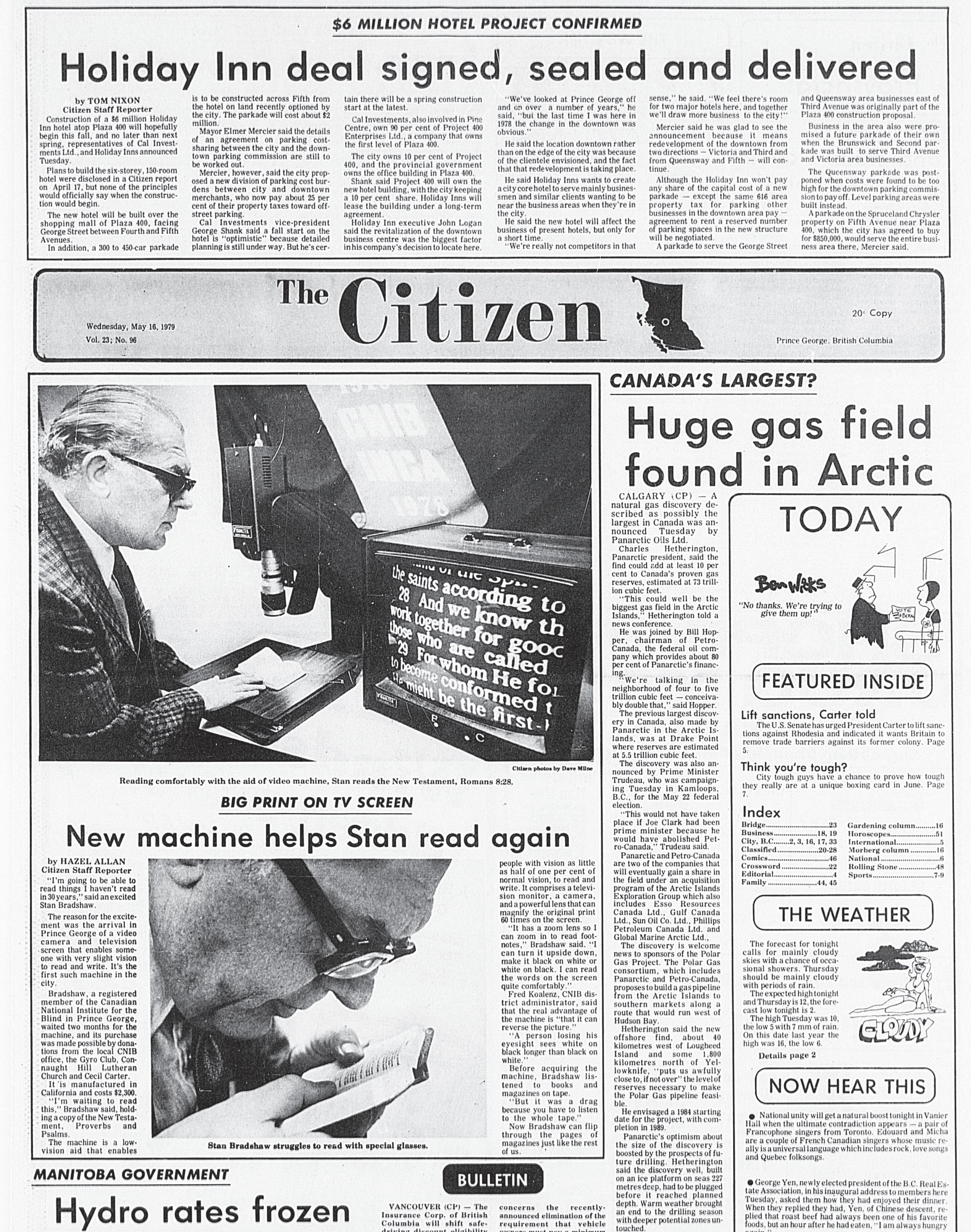

Doing nothing could save your life. What a notion in our productivity-manic times. The very idea of doing nothing is sure to provoke unease in people who treasure careerism and respectable living and who pursue, or feel compelled to pursue, socially sanctioned excellence. In her approachable and incisive new book, “How to Do Nothing: Resisting the Attention Economy,” Jenny Odell makes a case for turning away from our devices and social media and toward engagement with the world in a more personal,
aesthetic and cooperative way. The book is clearly the work of a socially conscious artist and writer who considers careful attention to the rich variety of the world an antidote to the addictive products and platforms that technology provides.
In writing about doing nothing, Odell could have given us a self-obsessive and self-indulgent tome or, conversely, a sanctimonious or pedantically utopian work. But she sails with capable ease between the Scylla and Charybdis of subjectivity and arid theory with the relatable humanity of her vision.
Though she doesn’t strike the pose of a
radical, there is a radicalism in her program of doing nothing that transcends normal classification. It’s at once a kind of political ideology, a spiritual practice, a moral imperative and an aesthetic reconception of the world as it can be when attention isn’t monetized, weaponized and atomized. It’s a form of liberation that doesn’t frame itself in direct antagonism to something else so much as it calls for a radical refocusing of attention toward the world around us.
To explain why we should refocus our attention, Odell notes the tension between being connected online and disconnected in the real world. We tend to stay online too much, she suggests, because digital platforms are structured to keep us connected for their own profit. It is necessary to escape to engage in sensitive, actual human interaction. Though these are not necessarily new observations, it’s worthwhile to reiterate that, for all the social unity and disunity social media sites promote, the profit motive is the reason most of them exist.
In one of the book’s most persuasive sections, Odell discusses the Greek philosopher Diogenes, who is more commonly known through anecdotes about his way of life rather than his philosophy, which essentially was about living simply, naturally and without shame, all while rejecting the artificial trappings of society. Her portrait of Diogenes is instructive in an unexpected way for understanding the art of doing nothing. Diogenes is famous for, among other things, living in a tub (or barrel) that he’d roll around Athens and walking around with a lantern, saying he was looking for an honest person. Noting Plato’s characterization of Diogenes as “Socrates gone mad,” Odell astutely observes that whereas Socrates “famously favored conversation, Diogenes practiced something closer to performance art. He lived his convictions out in the open and went to great lengths to shock people out of their habitual stupor, using a form of philosophy that was almost slapstick.” Diogenes famously lived doing nothing, refusing to accept the values of others. But he wasn’t a hermit, and he wasn’t a recluse. He lived engaged with the world,
all the while living apart.
Quite late in the book, Odell addresses the pernicious effects of social media on attention. She explains that Facebook and Twitter catch and kill sustained attention by eliminating context. Social media, she writes, casts users into a void composed solely of the present, where our focus is redirected so often that, perversely, it becomes one of the only places - sometimes the only one - where we can focus at all anymore. But that place lacks context and humanity and, therefore, sustainable meaning.
Given all this, how can doing nothing fix such a vast and complex social, cultural - and political - problem? She sees a need for a kind of Diogenes solution: Be engaged but apart. We must be able “to contemplate and participate, to leave and always come back, where we are needed,” she writes. She calls this standing apart. “To stand apart,” she observes, “is to take the view of the outsider without leaving ... It means not fleeing your enemy, but knowing your enemy, which turns out not to be the world - contemptus mundi - but the channels through which you encounter it day to day.” By standing apart, one may be able to refocus attention on the world, mitigate its social divisions and inequality, hear and see it in all its strangeness and richness. Doing nothing really means doing something: living in accordance with nature, community and careful observation of the world. “When we pry open the cracks in the concrete,” Odell writes, “we stand to encounter life itself - nothing less and nothing more.”

